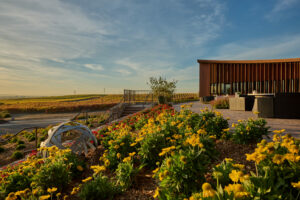
The Pinot Noir specialist offers an array of fun experiences, from terrace tastings to falconry demonstrations.
The post Bouchaine Vineyards Pays Homage to Burgundy in Wind-Swept Carneros appeared first on Sonoma Magazine.
]]>
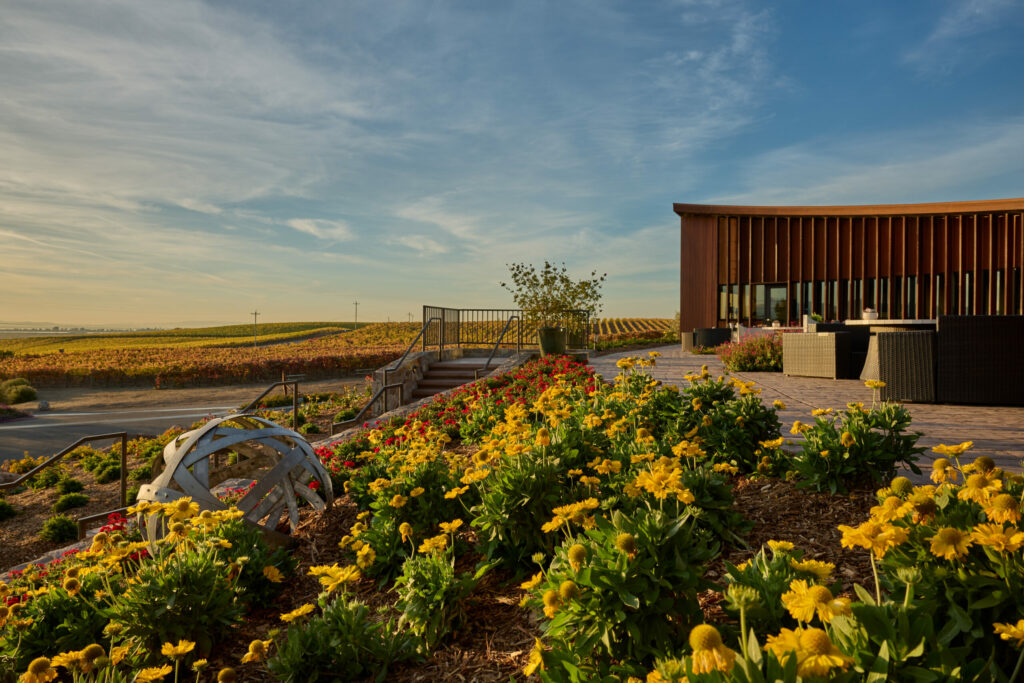
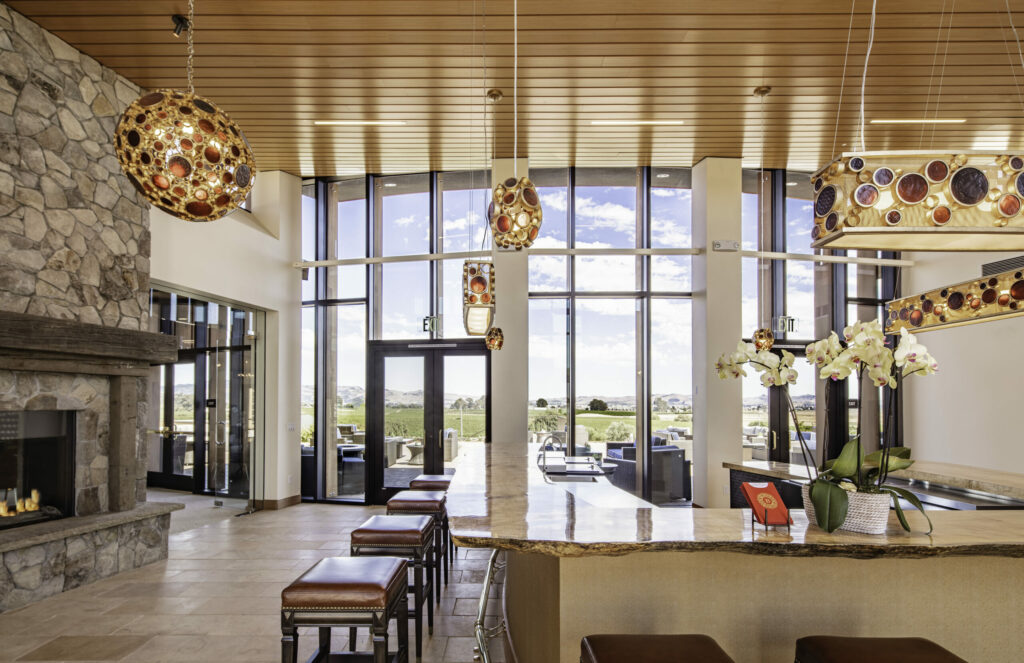
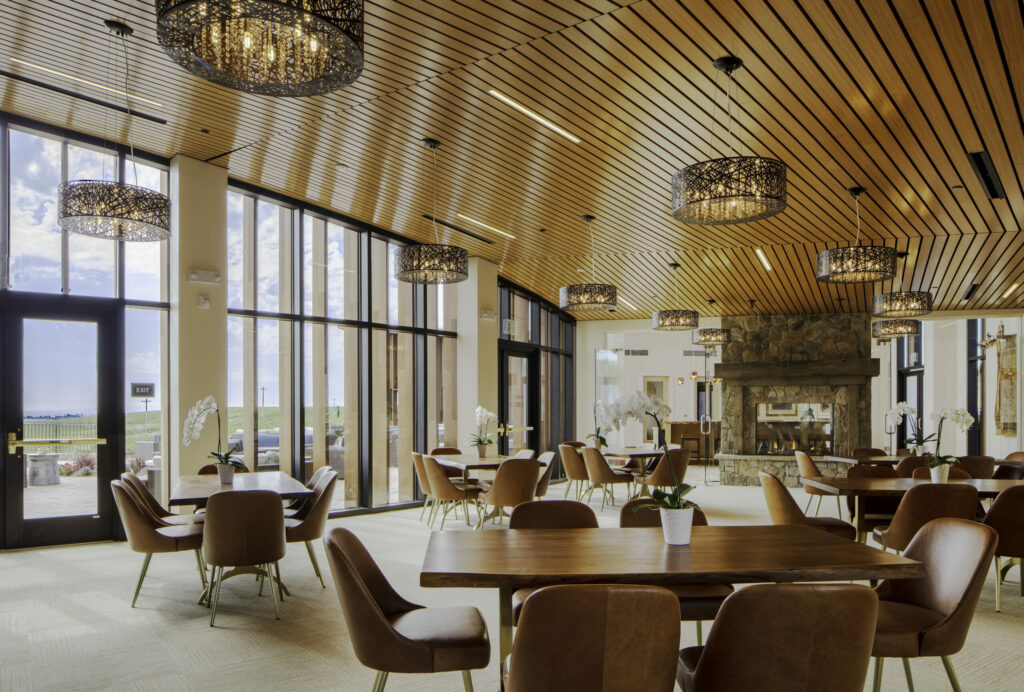
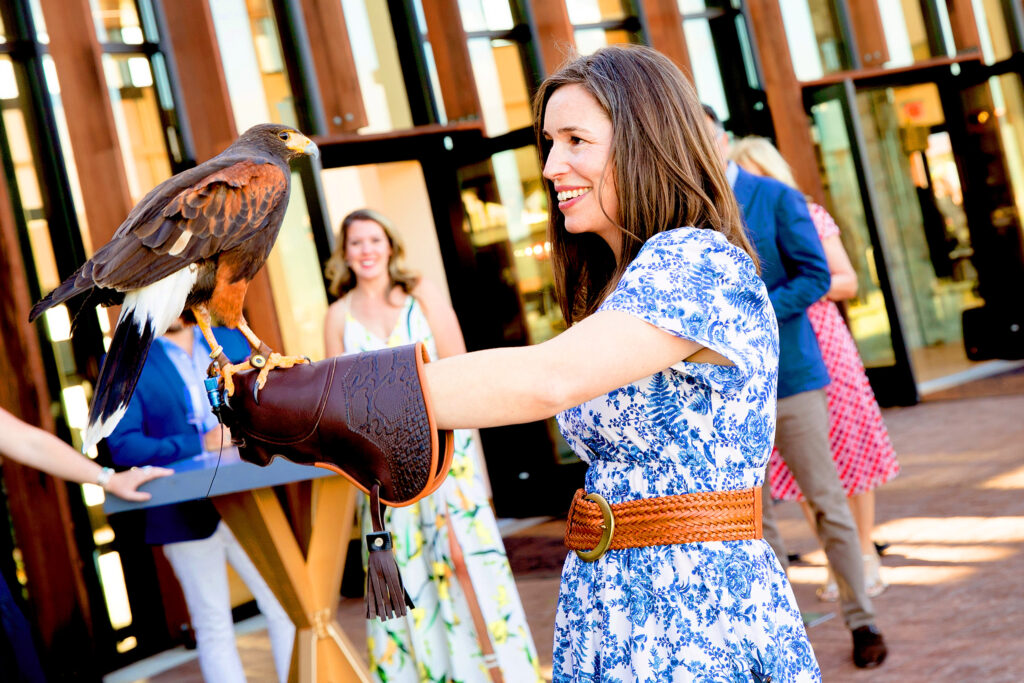
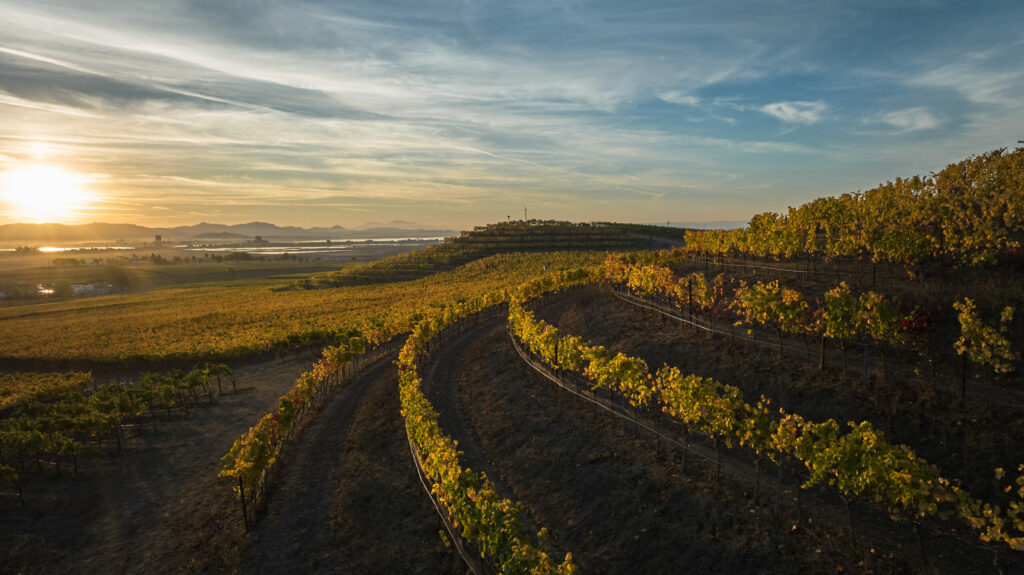
For a winery that only makes about 16,000 cases each year, Bouchaine Vineyards has a lot going on. The Carneros winery makes an array of delicious, single-vineyard and single-clone Pinot Noirs, plus Chardonnay, aromatic white wines and more. With 20 different small-lot wines on the roster, this is definitely a something-for-every-palate situation. You’ll also find plenty to do at the winery, from lounging on the tasting room terrace to soaring with falcons.
The story
In the late 1800s, a pioneer named Boon Fly led a wagon train from his native Missouri to Carneros and planted the first grapes on the future Bouchaine Vineyards estate. By the time Gerret and Tatiana Copeland bought the property nearly 100 years later, the dilapidated winery buildings had seen better days. Used for two decades as a storage facility for Beringer Vineyards, the winery looked more like a slaughterhouse than a production facility for fine wines.
The Delaware-based couple had no experience planting vines or running a winery, but they did have a lifelong love of wine and plenty of resources. Gerret, a member of the du Pont family, had a successful career in finance while Tatiana focused on international business. Though Tatiana was born in Germany and grew up in Argentina, her Russian family heritage provided a pivotal connection to renowned Napa Valley winemaker André Tchelistcheff. He declared the site ideal for Pinot Noir, which was thrilling news to Gerret, who’d long dreamed of owning a Burgundy-style domaine.

In the decades to follow, the Copelands expanded Bouchaine — the name is a play on bouchon, the French word for cork — to 100 acres and renovated the old winery buildings. Among the estate’s 87 acres of sustainably farmed vineyards are 46 acres of Pinot Noir, plus Chardonnay, Pinot Meunier, Pinot Grigio, Riesling and Syrah.
The vibe
Just outside Bouchaine’s hilltop hospitality center is a message embedded in stone pavers that sets the tone for your visit: Wine Makes You Happy. Inside the glass-walled building, renovated in 2019 to include a 2,000-square-foot terrace, you’ll find an expansive, sunlit space with a u-shaped tasting bar. Sofas and armchairs encourage guests to relax on the terrace and drink in views of the winery, vineyards and the San Pablo Bay. A second outdoor tasting area, set below the terrace in the winery’s flower garden, is a casual, family-friendly spot for bring-your-own picnics.

On the palate
Winemaker Chris Kajani spent years making wine at Saintsbury before joining Bouchaine in 2015, so she knows her way around Pinot Noir. The 2022 Swan Clone Estate Pinot Noir ($70), one in a series of single-clone offerings, sits at the lighter end of the spectrum with delicate strawberry and cherry notes. For fans of crisp, aromatic whites, go for the 2023 Alsatian White Blend ($50), a floral, peachy melding of Pinot Gris, Pinot Blanc, Gewürztraminer and Riesling. It’s not often you come across a stand-alone Pinot Meunier, so be sure to try the 2022 Estate Pinot Meunier ($72), with its savory-meets-berry profile.
Seated tastings range from $45 for the Garden Tasting to $75 for the Terrace Tasting. To explore how different winemaking vessels impact the wine in your glass, book the Vine to Vessel tasting ($120). You’ll step into the cellar to sample wines directly from large oak casks, concrete eggs, Acacia barrels, and both Italian and French clay amphorae.
Beyond the bottle

Bouchaine offers an array of interactive experiences, and one of the coolest is the Falconry in the Garden demonstration ($95). As part of its efforts to keep grape-eating birds at bay, a master falconer sends raptors into the vineyard to swoop in and scare the pests away. With a glass of wine in hand, visitors can meet the majestic falcons and watch them in action.
Bouchaine Vineyards, 1075 Buchli Station Road, Napa, 707-252-9065. Open daily, with reservations required for interactive experiences. bouchaine.com
Tina Caputo is a wine, food, and travel journalist who contributes to Sonoma magazine, SevenFifty Daily, Visit California, Northern California Public Media, KQED, and more. Follow her on Bluesky at @winebroad.bsky.social, view her website at tinacaputo.com, and email her story ideas at tina@caputocontent.com.
The post Bouchaine Vineyards Pays Homage to Burgundy in Wind-Swept Carneros appeared first on Sonoma Magazine.
]]>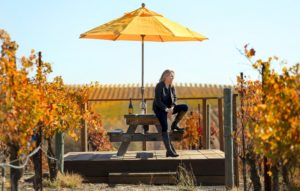
Three local women winemakers were celebrated in Wine Enthusiast for their innovative work in the wine industry.
The post Sonoma, Napa Women Recognized by Wine Enthusiast for Revolutionizing the Wine Industry appeared first on Sonoma Magazine.
]]>





In a recent Wine Enthusiast feature, eight women from around the globe were celebrated for their innovative work in the wine industry. Of those, three are based in Wine Country, helping lead the charge in reshaping an industry traditionally dominated by men.
These women’s groundbreaking work not only influences our local wine culture, but also contributes to a larger, global movement toward change and inclusivity in winemaking. Find more of our favorite women in the local wine industry here.
Cathy Corison, Corison Winery
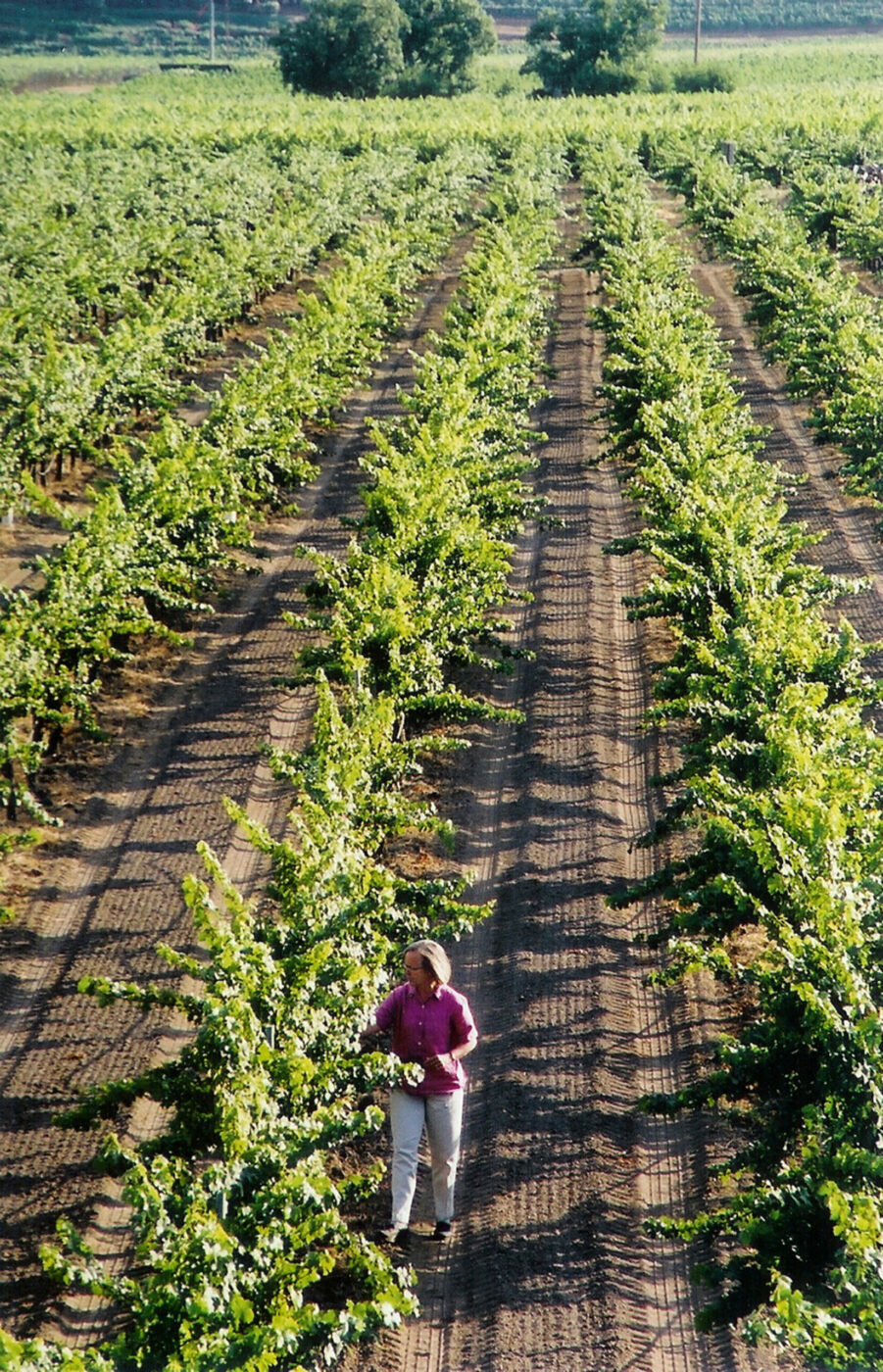
Cathy Corison has been a pioneer in artisanal winemaking for over three decades. When she entered the wine industry in 1972, women were a rarity in the field, but she quickly proved herself by earning a master’s degree in oenology from UC Davis. After gaining experience at various California wineries, she went on to co-found Corison Winery with her husband.
Known for producing wines that emphasize the power and elegance of Cabernet Sauvignon, as well as the subtlety of Cabernet Franc, Corison’s creations stand out for their refined qualities and balance. What shines through the most in Corison’s wines is her ongoing commitment to innovation. From adjusting acidity levels to experimenting with electric tractors, Corison is constantly pushing the boundaries of sustainable winemaking.
987 St. Helena Highway, St. Helena, 707-963-0826, corison.com
Anne Moller-Racke, Blue Farm

Anne Moller-Racke’s journey in the wine industry has been marked by groundbreaking work and a deep connection to California’s wine culture. Originally from Oberwesel, Germany, Moller-Racke arrived in California in 1981. Her first major role was becoming the vineyard manager for Buena Vista Carneros Winery. There, she helped Los Carneros gain recognition as an American Viticultural Area (AVA).
In 2001, Moller-Racke founded The Donum Estate, where she served as president and winegrower, further establishing her reputation in the industry. While growing the Donum brand, she started a personal project at her home, planting seven acres of Pinot Noir. This humble beginning evolved into Blue Farm Wines, a boutique vineyard now known as one of California’s finest. In 2019, Moller-Racke shifted her focus entirely to Blue Farm, leaving Donum to invest her energy in her new pursuit.
Sonoma, 707-721-6773, bluefarmwines.com
Theresa Heredia, Heredia Wine Consulting
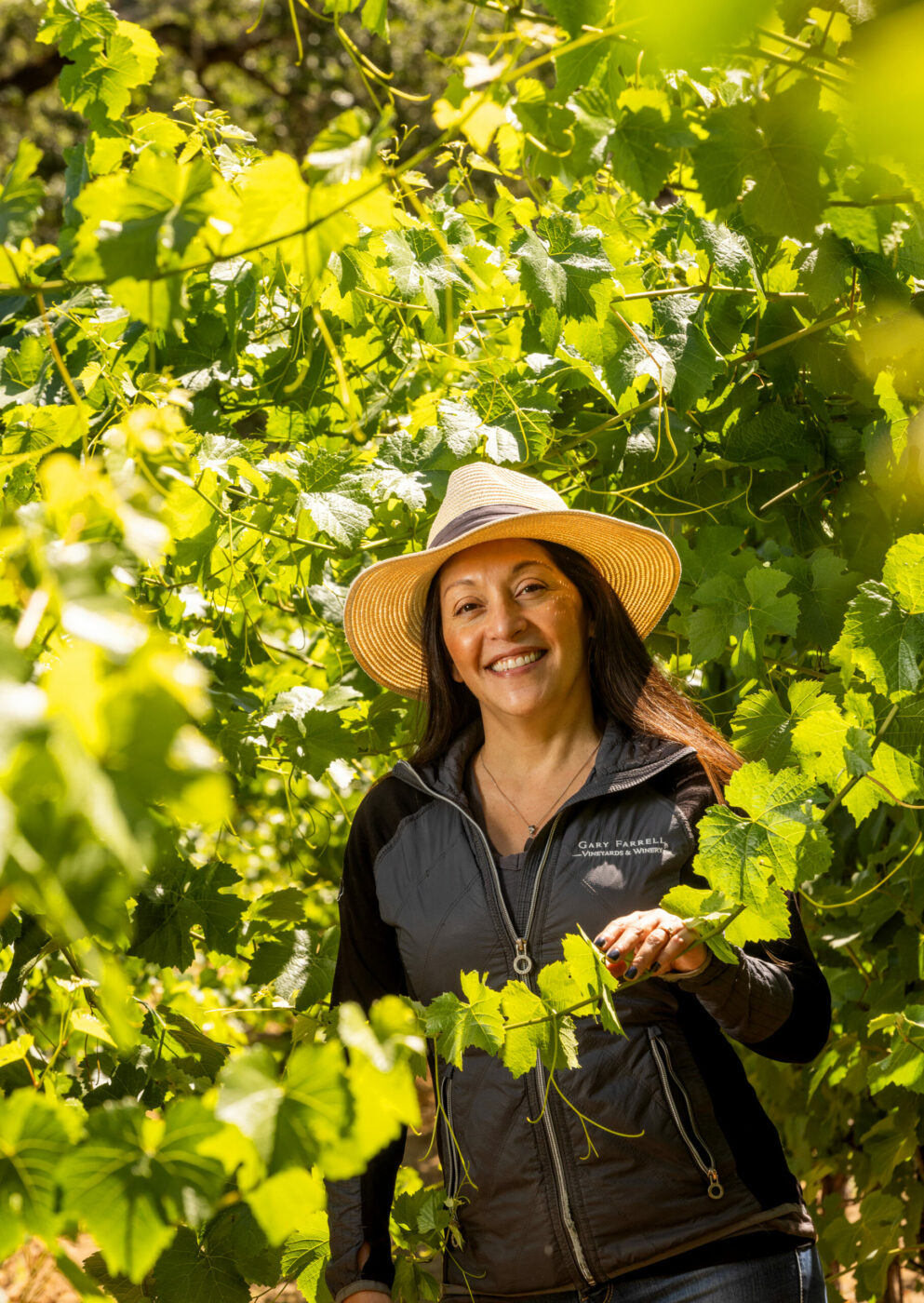
Theresa Heredia’s passion for wine began with her chemistry background and was deepened by her early travels through France’s renowned wine regions. Her first internship at Saintsbury Winery in Napa’s Los Carneros set the stage for a career focused on cool-climate grapes. She further honed her skills as a winemaker at Freestone Vineyards in Sonoma.
In 2012, Heredia brought her expertise to Gary Farrell Winery as a winemaker, specializing in Pinot Noir and Chardonnay. She served as the director of winemaking, leading the production of wines that highlight the unique characteristics of the vineyards. Heredia left Gary Farrell in May 2024 to start her own wine consultant business, Heredia Wine Consulting, where she offers guidance to wineries on everything from grape sourcing to winemaking protocols.
Service areas in Sonoma County and beyond. herwineco.com
The post Sonoma, Napa Women Recognized by Wine Enthusiast for Revolutionizing the Wine Industry appeared first on Sonoma Magazine.
]]>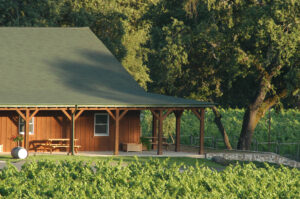
Wooden tables dot a large patio overlooking Napa Valley vineyards, inviting guests to slow down and get comfortable.
The post Hendry Ranch Is Doing It Old School in Napa appeared first on Sonoma Magazine.
]]>





Napa is justifiably famous for its Cabernet Sauvignon and Chardonnay, but in the region’s early days — before skyrocketing land prices made it practically impossible to justify growing grapes that didn’t command the highest prices — the valley’s offerings went far beyond the “king” and “queen” of noble grapes. Hendry Ranch offers a welcome taste of variety on a charming estate at the foot of Mt. Veeder, farmed by the same family for more than 85 years.
The story
Hendry Ranch got its start in 1939, when agronomy professor George W. Hendry bought a 200-acre property in Napa and moved there with his wife Margaret. When George died just five years later, Margaret took over managing the farm, growing plums, walnuts and grapes — all while raising their two children. Having grown up on the family ranch, their son George O. Hendry followed a somewhat unexpected career path: He became a designer of cyclotrons used in medical imaging. Any free time he had, he spent working on the farm.
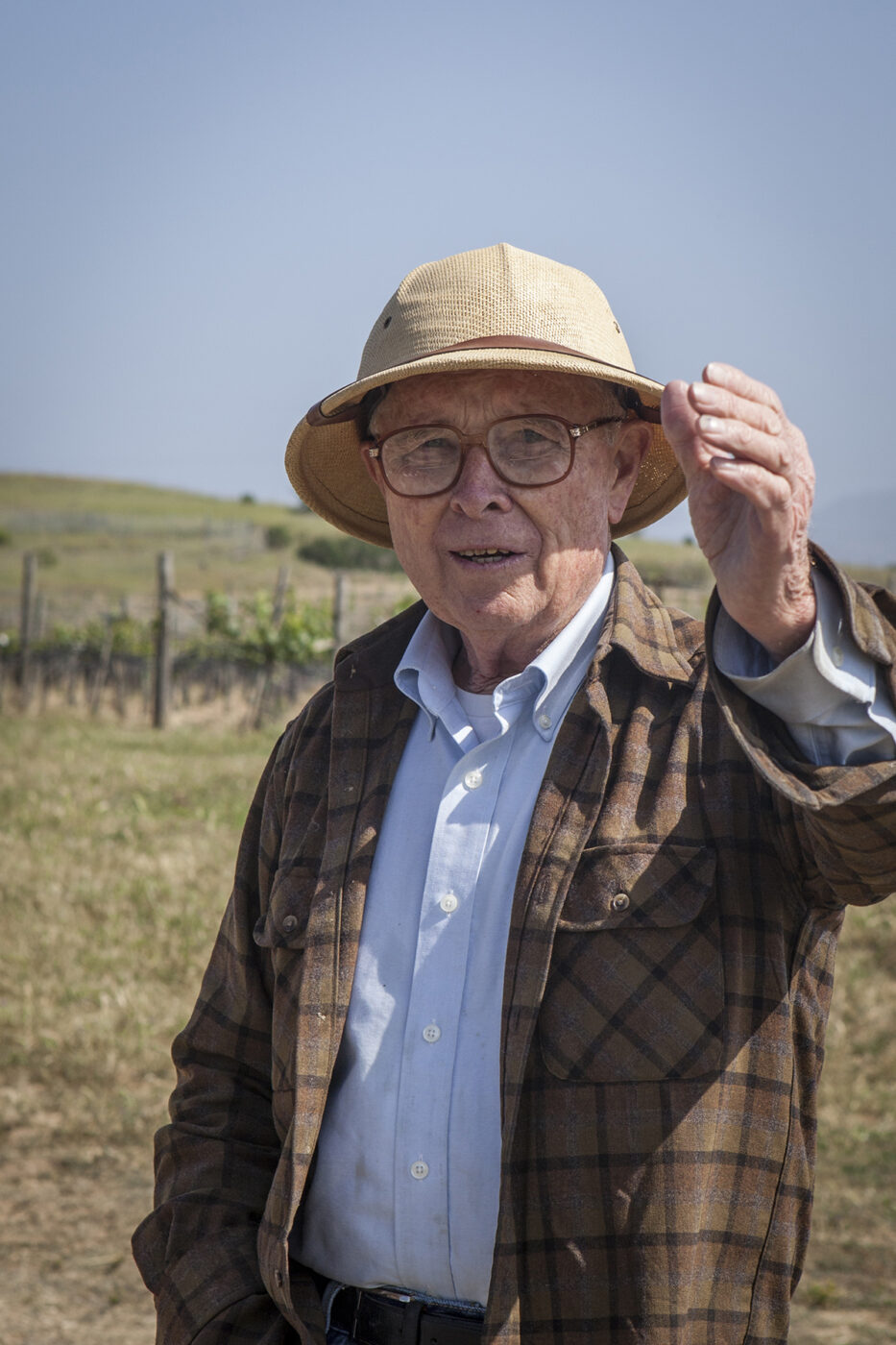
By the early 1970s, with Napa’s wine industry on the rise, Hendry realized he could make more money selling wine grapes than he would bring in with prunes and walnuts. He replanted most of the ranch to grapes, starting with Zinfandel and Pinot Noir, and began selling the fruit to Robert Mondavi and Kent Rosenblum. He made his first wine in 1992 and built the winery eight years later.
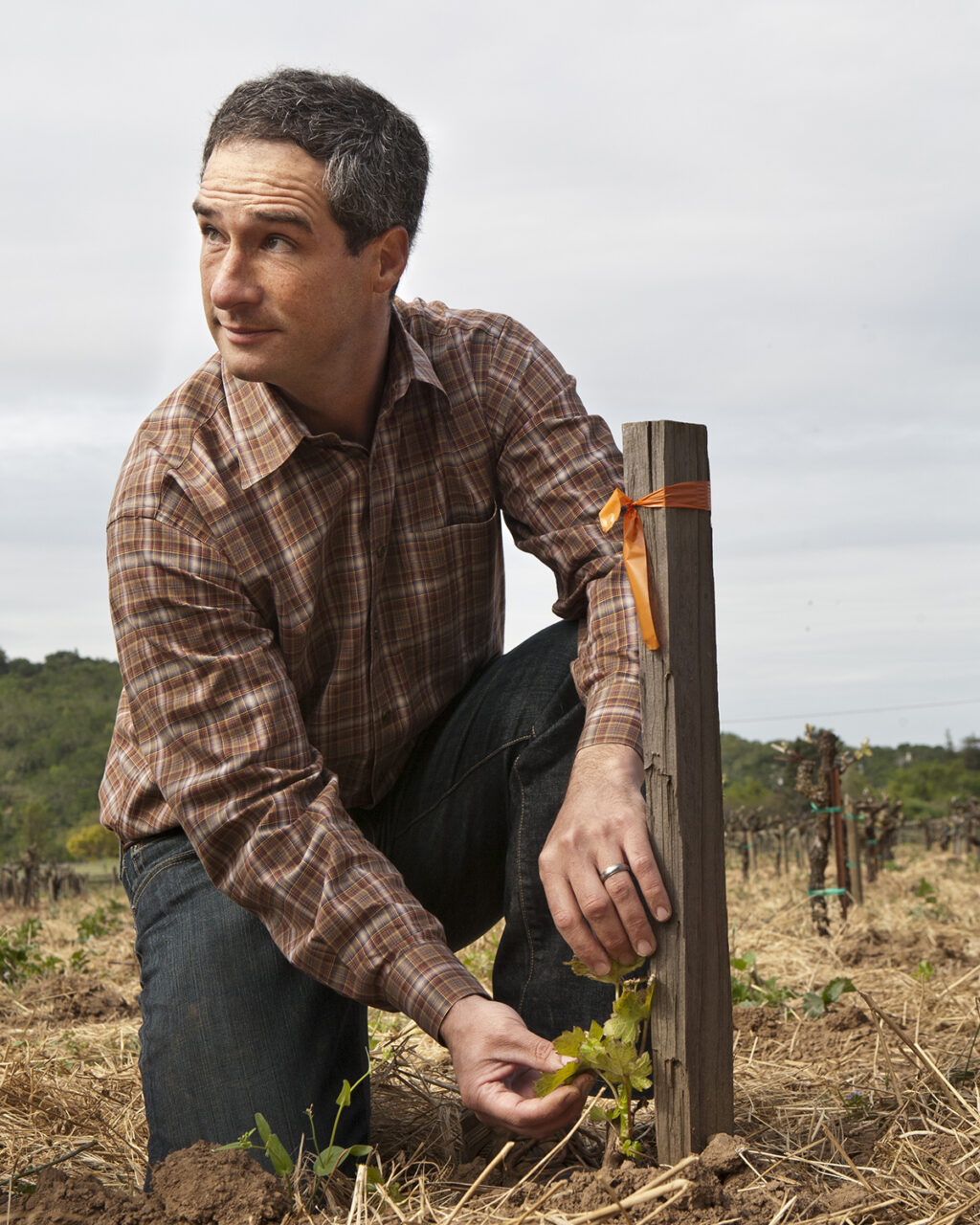
Hendry — now in his 80s — still lives on the property, just a short walk from the winery. His nephew, Mike Hendry, manages the ranch’s 114 acres of vines, including many grape varieties you don’t often find in Cabernet-centric Napa these days, like Primitivo, Albariño and a tiny bit of Mission.
The vibe
Driving through residential Browns Valley, most people wouldn’t expect to find a vineyard estate. Look for the understated sign that marks the entrance to Hendry Ranch, then drive past George Hendry’s big white house to the brown tasting room building.
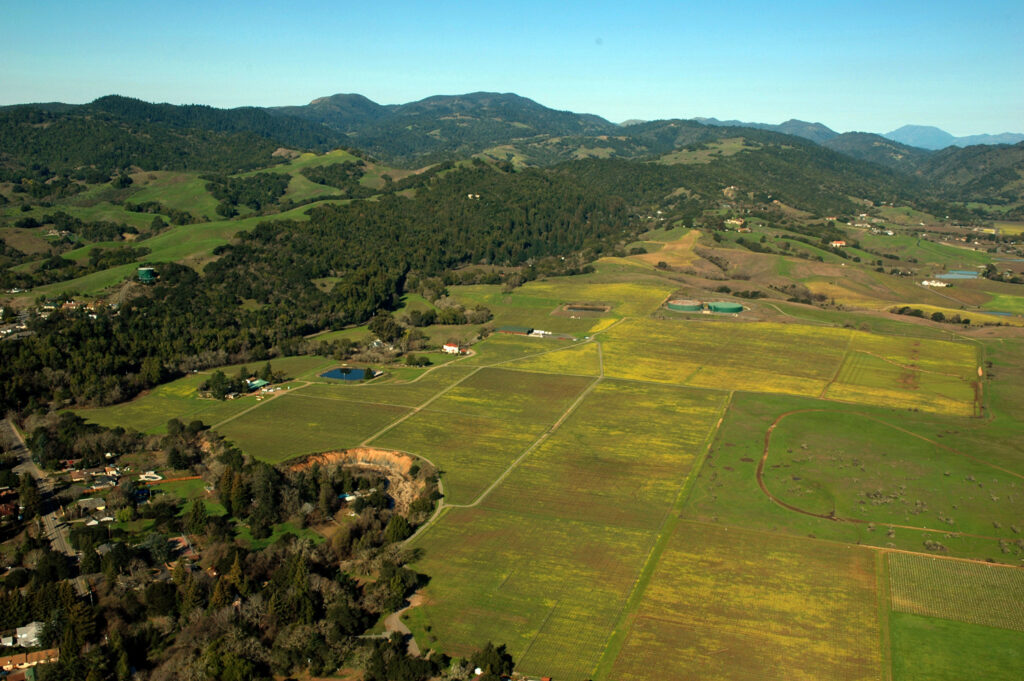
Wooden tables dot a large patio overlooking the vines, inviting guests to slow down and get comfortable. The bright and airy indoor space, decorated with warm wood accents and Hendry family artifacts, includes various rooms for seated tastings. Hendry often pops in to say hello, accompanied by Gracie, his sweet Chihuahua mix.
On the palate
Hendry grows a dozen grape varieties, so there’s a lot to explore. Albariño has recently become “a thing” in the U.S., but you won’t find many made in Napa Valley. George Hendry was way ahead of the curve, planting it on the ranch in 1997.
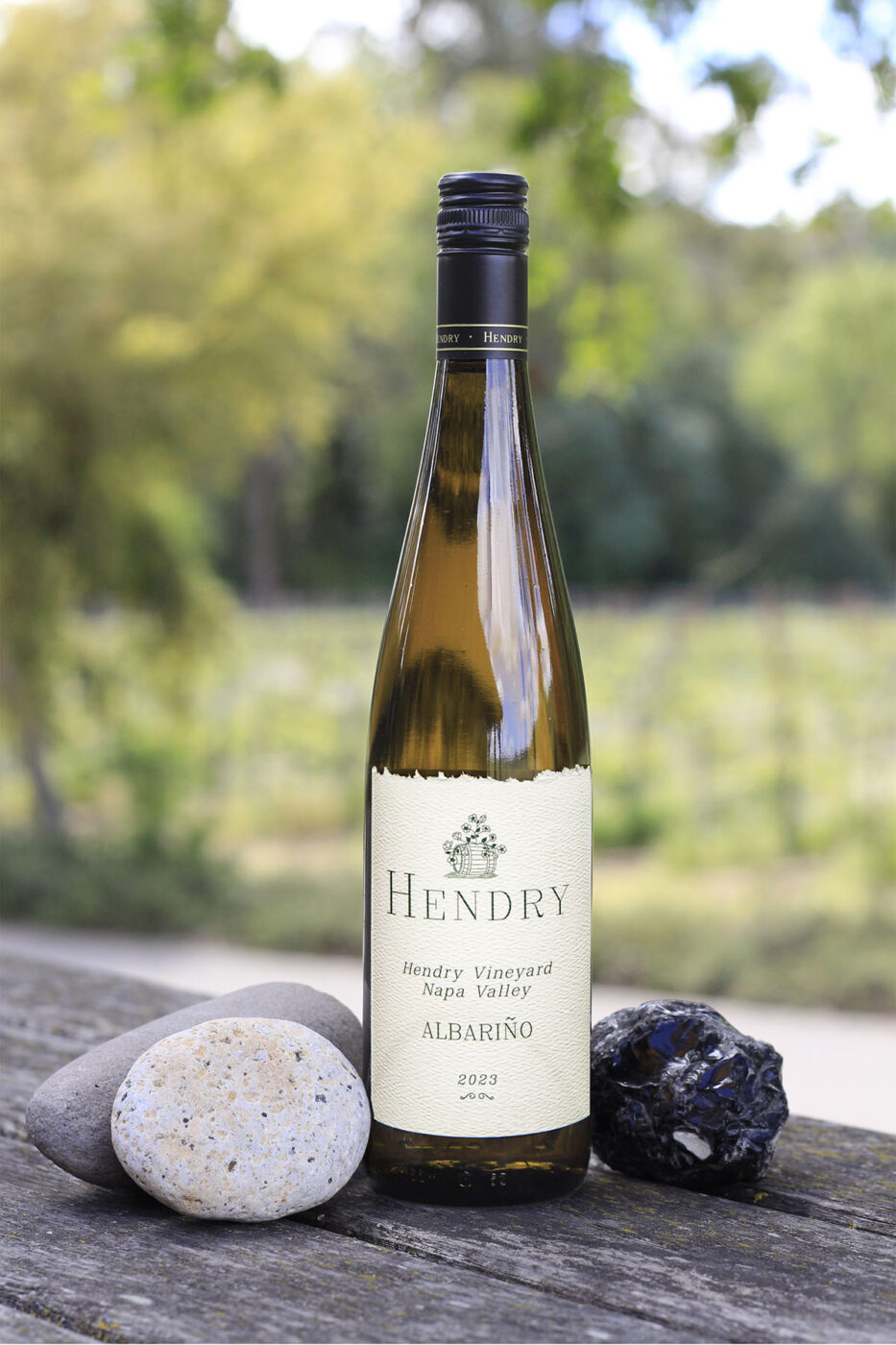
Hendry’s 2023 Albariño ($28) is a lively summer sipper with peachy notes. It’s fun to compare the 2023 Unoaked Chardonnay ($28) and 2023 Barrel Fermented Chardonnay ($40). The wines are made with the same grapes and share a tangy green apple profile, but the oak adds soft vanilla aromas and a creamy texture. A standout among the reds is the elegant 2021 Primitivo ($42) with its cherry-berry flavors.
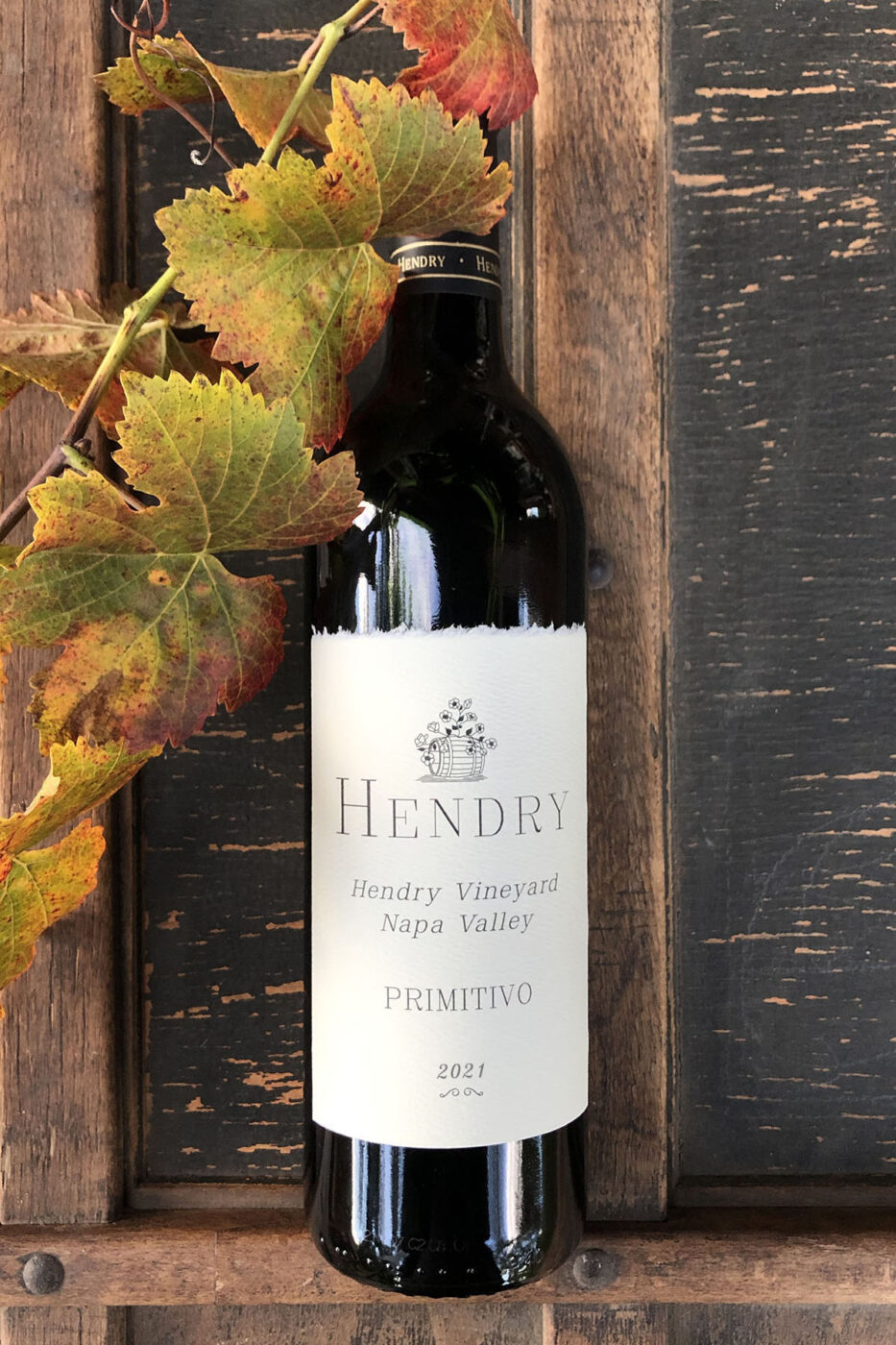
Tastings range from $50 for a red wine flight to $75 for a mixed tasting to $100 for a flight of reserve wines. (All fees are waived with an equivalent wine purchase.) Because appointments are private affairs with an expert guide, the tasting lineups often vary according to guests’ interests. You might even get a quick lesson in grafting grape vines.
Beyond the bottle
I love a gourmet market, and locally owned Browns Valley Market is a neighborhood gem. It’s known for its meat section, so this is the place to grab steaks or a marinated tri-tip to pair with Hendry’s excellent Zinfandel or Cabernet Franc. The deli offers a terrific selection of grill-and-go panini to take along on a Wine Country picnic.
3104 Redwood Road, Napa, 707-226-8320. Tastings daily by appointment. hendrywines.com
Tina Caputo is a wine, food and travel writer whose work has appeared in numerous publications, including SevenFifty Daily, Visit California, HuffPost and Sonoma magazine. Follow Tina on Twitter @winebroad, view her website at tinacaputo.com and email her story ideas at tina@caputocontent.com.
The post Hendry Ranch Is Doing It Old School in Napa appeared first on Sonoma Magazine.
]]>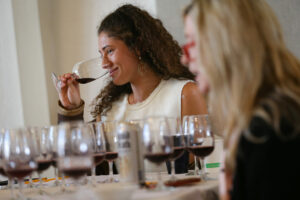
The Press Democrat's annual North Coast Wine Challenge is calling on local producers to enter by March 21. Here's how to enter.
The post Region’s Best Wines Go Head to Head in the Annual North Coast Wine Challenge. Here’s How to Enter appeared first on Sonoma Magazine.
]]>





The Press Democrat’s annual North Coast Wine Challenge, a regional competition exclusively focused on wines produced and bottled in select Northern California AVAs, is calling on local producers to enter by March 21.
Eligible North Coast AVAs include those in Sonoma, Napa, Marin, Mendocino, Lake and Solano counties. Top-tier wine professionals — including noted sommeliers, winemakers, restaurateurs, wine writers and more — will judge the wines. Gold-winning wines will be publicly announced in The Press Democrat and winners will be invited to pour at its North Coast Wine & Food Festival, June 14, where over 1,200 people attend every year.
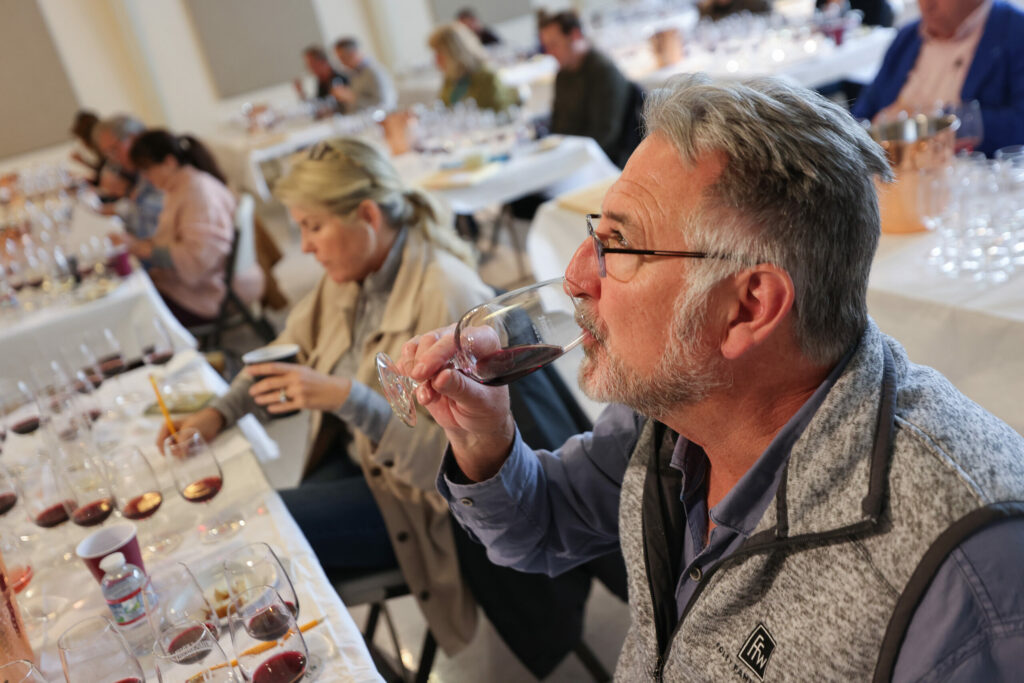
How to enter
To enter, log into EnofileOnline or register for an account and enter wines in the competition online. Entry fee is $85 per wine. Deadline to enter is March 21 and wine shipments (addressed to Press Democrat North Coast Wine Challenge) must arrive at Express Wine Delivery (7970 Cameron Drive, Windsor) by 5 p.m., March 24.
Official entries should include four 750-ml bottles per wine entry or equivalent, such as eight bottles/cans of 375 ml each. For containers larger than 1 liter in volume, send two units. Boxes should be marked “2025 PDNCWC” on all sides. Mark boxes “1 of 2,” “2 of 2,” etc. to ensure entire shipment is received. Download shipping labels here.
Judging will take place April 1-2.
For more information, email contact@pdncwc.com or visit pdncwc.com.
The post Region’s Best Wines Go Head to Head in the Annual North Coast Wine Challenge. Here’s How to Enter appeared first on Sonoma Magazine.
]]>
The winery is a magnet for a hip, younger crowd — but also feels comfortingly familiar to those of us who remember watching reruns of “The Brady Bunch” after school.
The post Ashes & Diamonds Is Still the Coolest Kid in Napa appeared first on Sonoma Magazine.
]]>





When Ashes & Diamonds arrived on the scene nearly eight years ago, it was almost like an act of revolution. Deliberately foregoing the “faux Château” architecture and riper-is-better approach embraced by many wineries at the time, the Napa newcomer made a splash with its midcentury-inspired style and classically restrained wines.
The story
Kashy Khaledi spent most of his adult life working as a creative director in multimedia and advertising, including stints at Live Nation and Capitol Records, before turning his visionary talents to wine. The son of Darioush Winery founder Darioush Khaledi, he’d come to admire the new crop of California winemakers embracing organic and biodynamic farming practices, and he had a special love for Napa wines from the ‘60s and ‘70s. With Ashes & Diamonds, Khaledi set out to create modern-day renditions of the elegant, low-alcohol wines that filled his cellar. He opened the winery — named for the 1958 Polish film that inspired his life-altering career move — in 2017.
The vibe
By design, the Ashes & Diamonds winery looks like a stylish throwback to another era. Set along Highway 29, next to Don Giovanni, the place has a light and breezy aesthetic that’s more Palm Springs than typical Napa Valley. Los Angeles architect Barbara Bestor collaborated with Khaledi to conceive the boxy white building, with its wall-sized windows, zigzag roof and playful portholes. In contrast to his parents’ opulent winery up the road, inspired by the ancient city of Persepolis in the family’s native Iran, Ashes & Diamonds is all clean lines and minimalist decor.
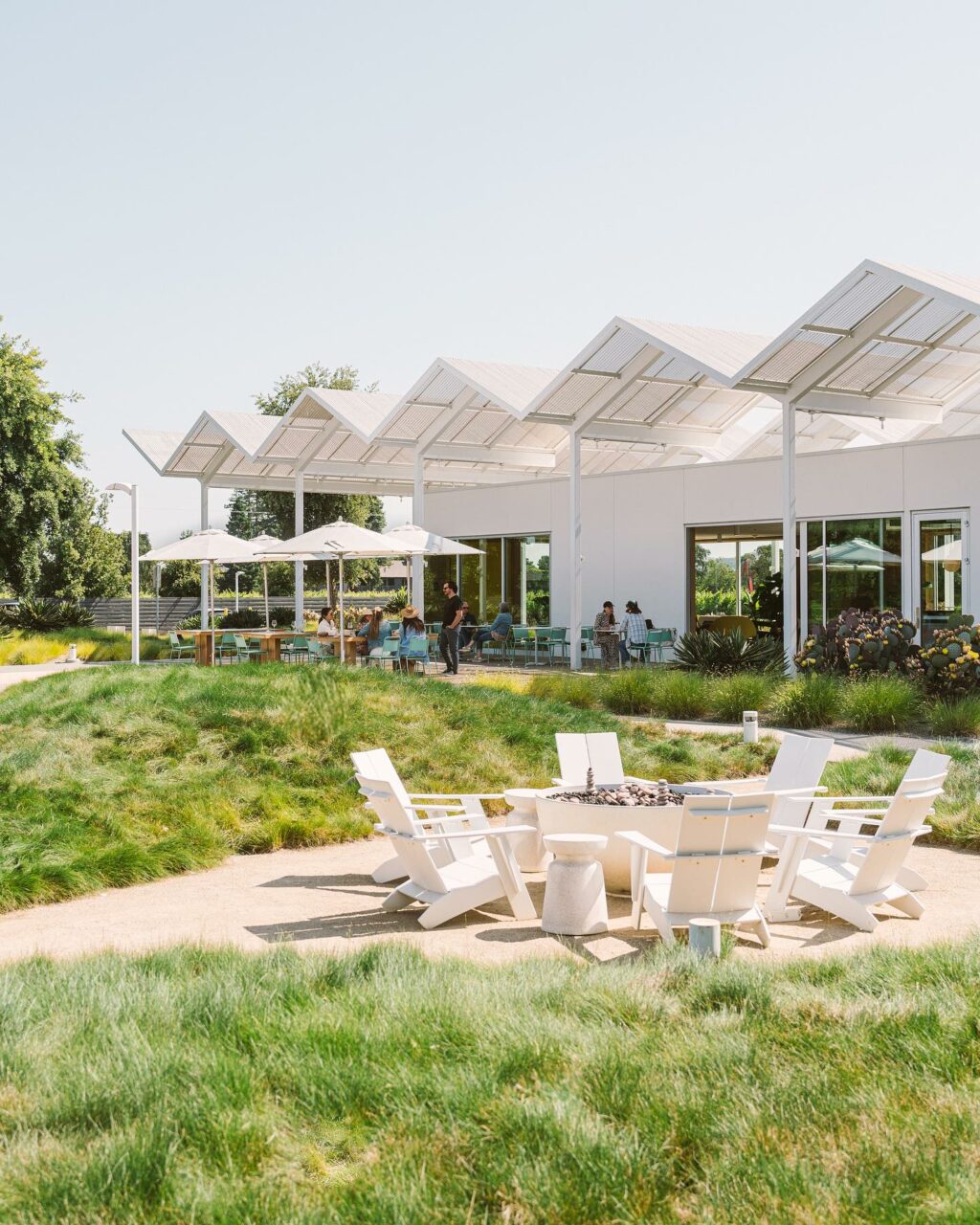
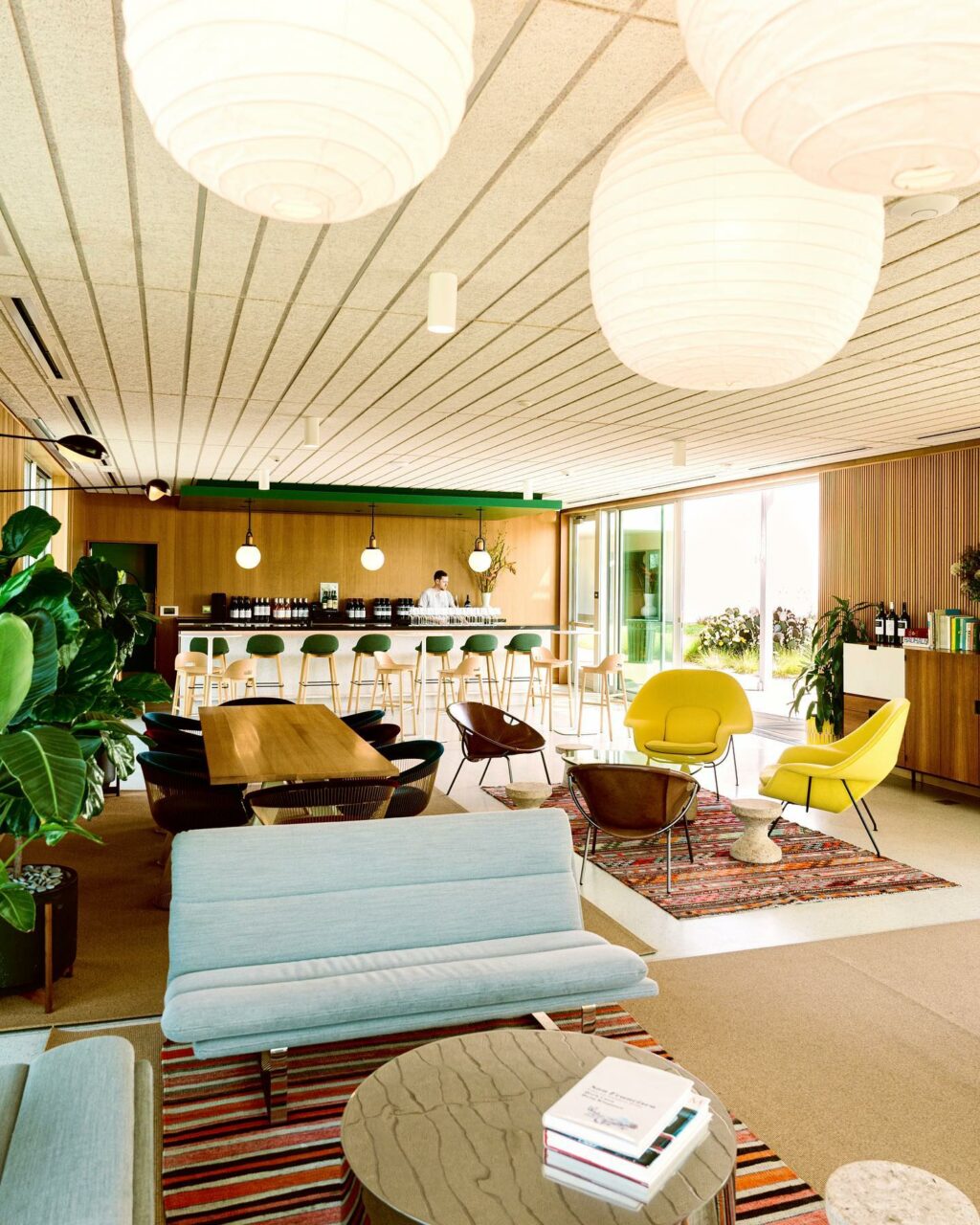
Enter through the oversize yolk-yellow door and you’ll find an open space outfitted with curvy midcentury modern chairs and sofa seating. From its potted plants to its ‘70s playlists, everything is carefully curated to create a relaxed, lighthearted atmosphere. This makes the winery a magnet for a hip, younger crowd — though its style also feels comfortingly familiar to those of us who remember watching reruns of “The Brady Bunch” after school.
On the palate
Ashes & Diamonds wines are “classic California,” before oak and alcohol levels began creeping up. Taking a divide-and-conquer approach, the wines are crafted by a trio of winemakers: minimalist Steve Matthiasson, Diana Snowden Seysses, who makes wine in Burgundy as well as California, and sparkling wine innovator Micheal Cruse. The wines, which hail from the Ashes & Diamonds Vineyard in the Oak Knoll District as well as other sites in Napa and the Santa Cruz Mountains, are lower in alcohol than many Napa offerings, with less emphasis on new oak.
Try the chillable 2023 Rosa ($45), a deeply colored blend of Cab Franc and Sangiovese that tastes like a grown-up version of Hawaiian Punch — and I mean that as a compliment. I’m especially smitten by the 2021 Napa Valley Cabernet Franc No. 8 ($80), which skillfully balances fruit and acidity for optimal food compatibility (looking at you, duck carnitas!).
Tastings range from $45 for a three-wine teaser of club-only wines to $175 for the excellent A&D Wines + Food family style lunch. This season’s menu features incredible housemade focaccia with mushroom butter, plus squash spaetzle, and chicken schnitzel with tahini rémoulade.
Beyond the bottle
Keep it low key with a post-tasting hang at Napa Yard at Oxbow Gardens. The dog-friendly beer garden along the Napa River was made for lawn games, tasty tacos and chilling around fire pits.
Ashes & Diamonds, 4130 Howard Lane, Napa. Open daily. ashesdiamonds.com
Tina Caputo is a wine, food, and travel writer whose work has appeared in numerous publications, including SevenFifty Daily, Visit California, HuffPost, and Sonoma magazine. Follow Tina on Twitter @winebroad, view her website at tinacaputo.com, and email her story ideas at tina@caputocontent.com.
The post Ashes & Diamonds Is Still the Coolest Kid in Napa appeared first on Sonoma Magazine.
]]>
A gorgeously Gothic Victorian mansion in St. Helena sets the stage for dark and brooding reds.
The post Faust Haus Is a Devilishly Good Place to Taste Wine appeared first on Sonoma Magazine.
]]>





If you’ve never heard the tale of “Faust,” it goes something like this: A discontented scholar makes a pact with the devil, trading his soul for limitless knowledge and worldly pleasures. (Spoiler alert: It does not go well for our tragic hero.) Named for the centuries-old legend, Faust Wines in St. Helena delivers on earthly delights — without the fiery consequences.
The story
Agustin and Valeria Huneeus, of Quintessa and Flowers fame, founded Faust Wines in 1998 and released the first wine in 2002. To support the brand, they planted more than 100 acres of Cabernet Sauvignon in what is now the Coombsville appellation — a cooler region at the southeast end of Napa. The Huneeus family found a dedicated home for Faust when St. Clement winery abruptly closed in 2016. After years of renovations on the 1870s mansion that formerly served as St. Clement’s tasting room, they opened Faust Haus in the fall of 2020.
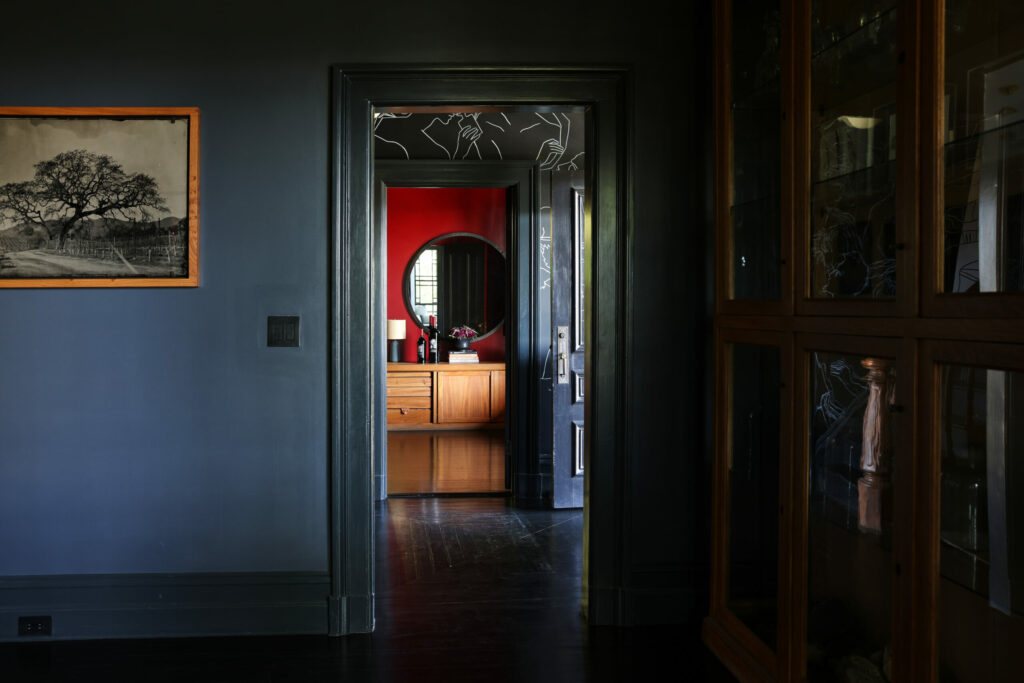
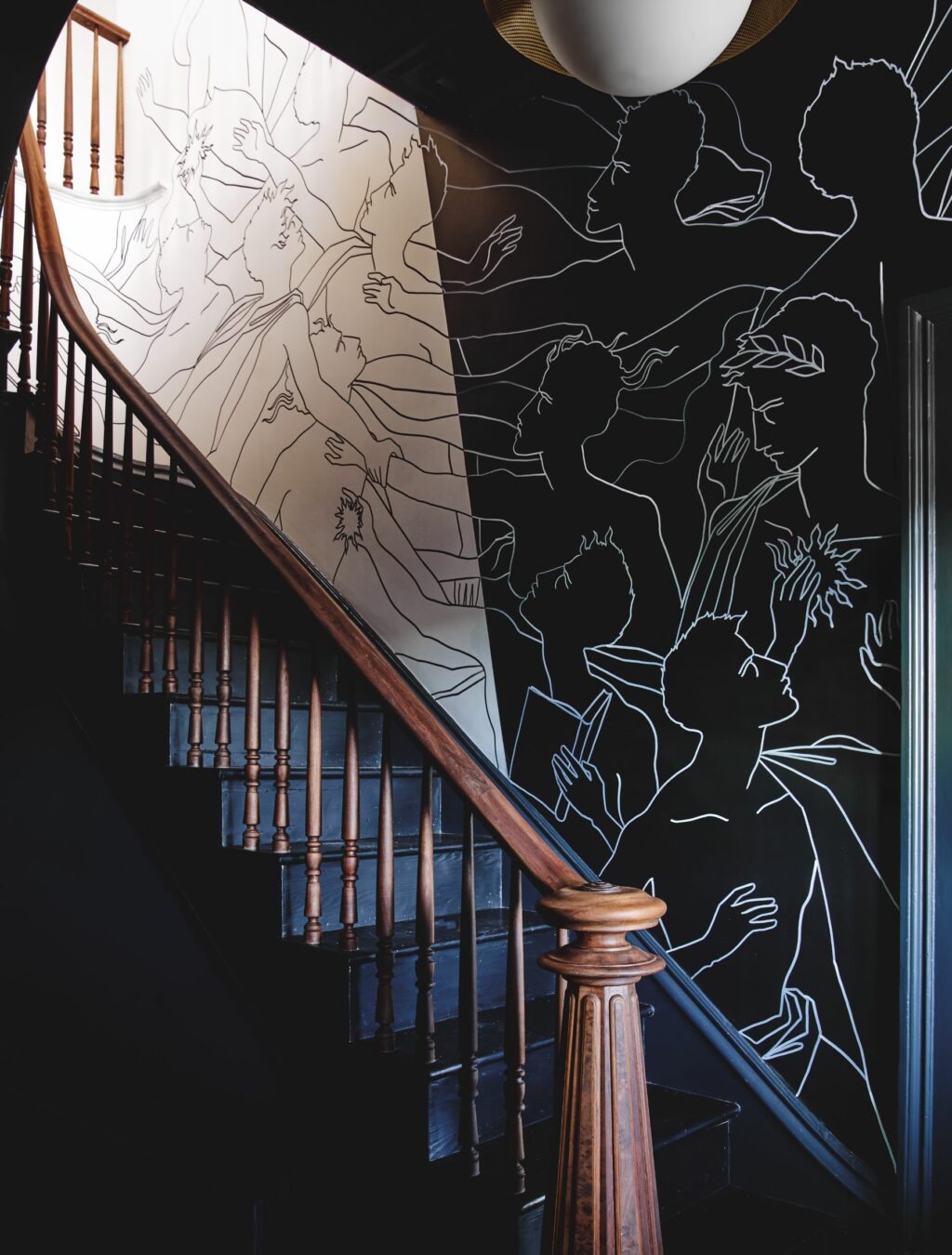
The vibe
It’s easy to spot Faust Haus from Highway 29. It’s the black Victorian mansion on the hill, just a half mile north of the Culinary Institute of America.
Everything about the building’s design whispers the story of Faust, from its black exterior to the darkness-to-light theme that runs throughout the house. The cellar, rumored to have operated as a speakeasy during Prohibition, is a dimly lit, intimate space with stone walls and lounge seating. The mood begins to lighten up on the main floor, which features a series of rooms with deeply colored blue and red walls, and plush chairs in electric blue.
Head up the staircase, pausing to admire the hand-drawn mural by Parisian artist Roberto Ruspoli, and you’ll reach the “heavens.” Adorned with white paint and contemporary blonde wood furniture, this top-floor tasting space is bathed in light. The outdoor terrace is almost as impressive, with its custom-designed, midcentury furniture and hilltop views across Highway 29 and the valley below.
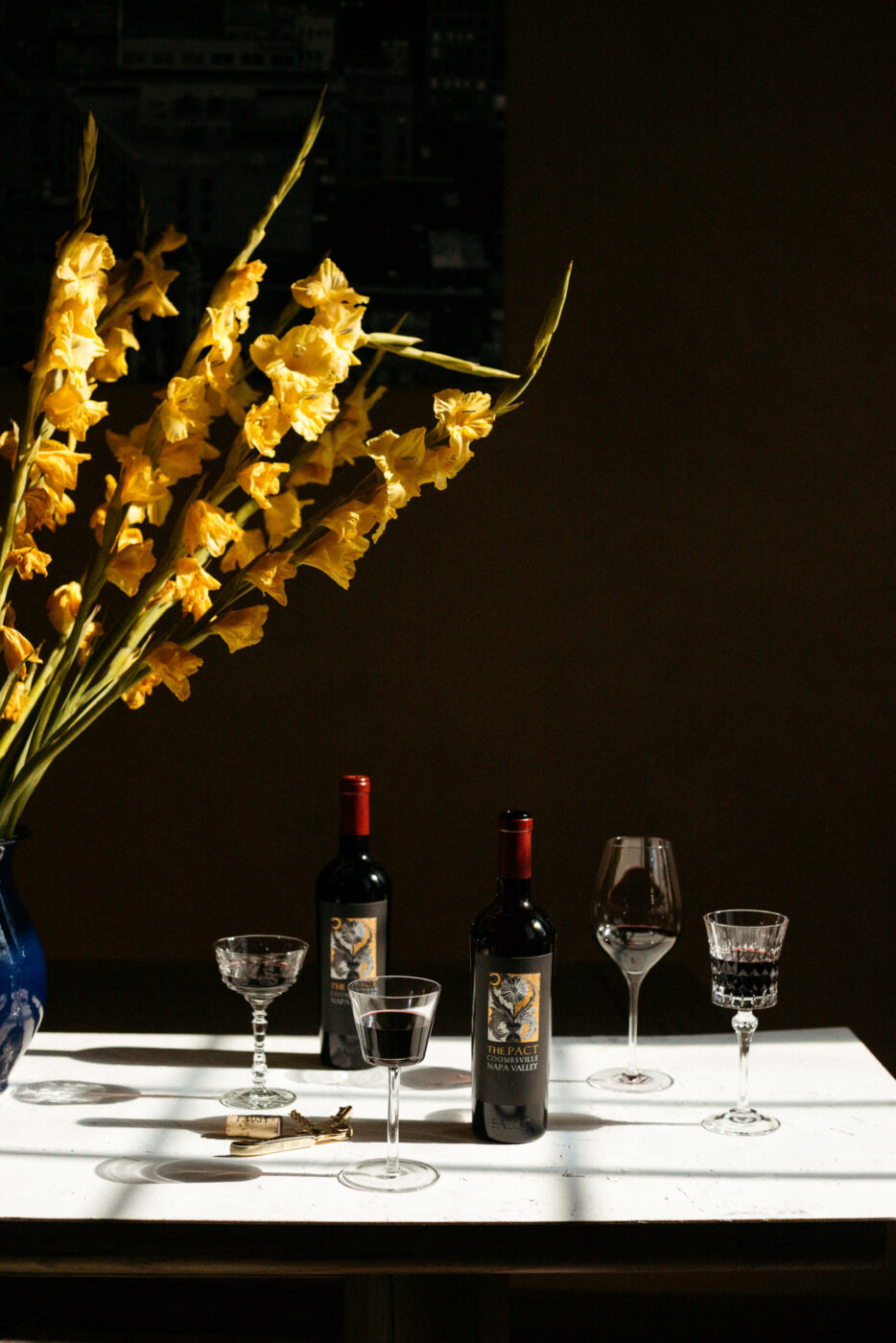
On the palate
The winery’s lineup includes two labels: the nationally distributed Faust and The Pact, a smaller-production brand focused on Coombsville estate fruit. The 2022 Faust Napa Valley Cabernet Sauvignon ($65) is bold and concentrated, with black cherry fruit and impressive balance. The Pact 2021 Coombsville Cabernet Sauvignon ($125) is a deep and complex wine that shows off sweet and savory aromas, plus rich blueberry and black cherry flavors. The Lure 2021 Coombsville Merlot ($90) might just be my favorite, with its plush texture, aromas of tobacco spice and plummy fruit flavor.
Tastings range from $75 for a sampling of limited-production estate wines to $150 for an immersive experience that includes a tour of the property, barrel tasting, library wines, and pairings with local cheeses and charcuterie. The Winter in the Winery tasting ($100), offered on Fridays and Saturdays, features an array of artisan charcuteries, cheeses and housemade snacks.
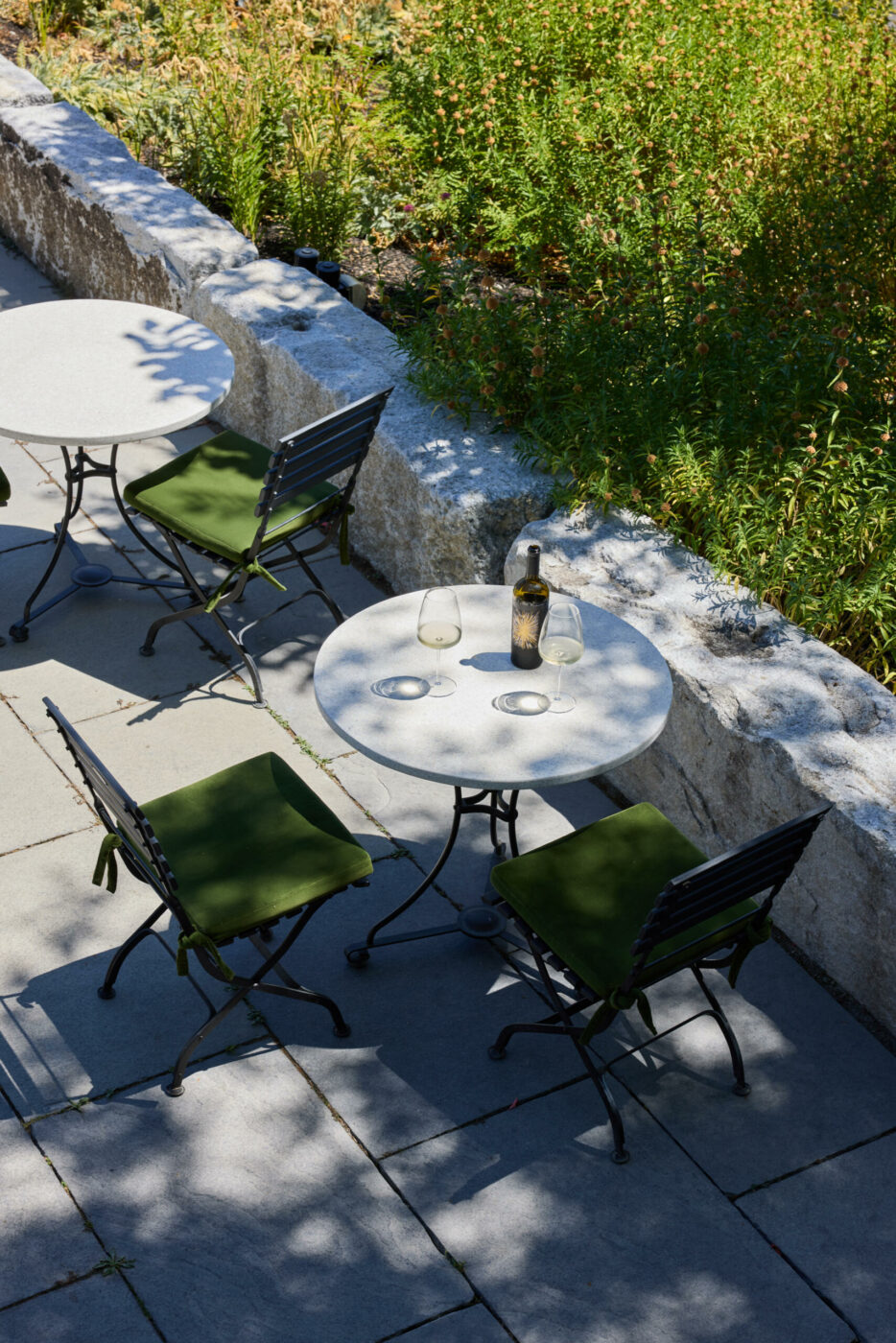
Beyond the bottle
To continue exploring stately mansions, have lunch at Violetto, set inside a 1907 Georgian-style home at the nearby Alia Napa Valley resort. The restaurant showcases modern food from Northern Italy, and it even offers a lunchtime tasting menu. Go for the griddled mortadella sandwich with charred broccoli rabe from the à la carte offerings. Or, if you’re in the mood to linger, choose the three-course prix fixe ($45 per person).
Faust Wines, 2867 St. Helena Highway, St. Helena. 707-200-2560, faustwines.com
Tina Caputo is a wine, food and travel writer whose work has appeared in numerous publications, including SevenFifty Daily, Visit California, HuffPost and Sonoma magazine. Follow Tina on Twitter @winebroad, view her website at tinacaputo.com, and email her story ideas at tina@caputocontent.com.
The post Faust Haus Is a Devilishly Good Place to Taste Wine appeared first on Sonoma Magazine.
]]>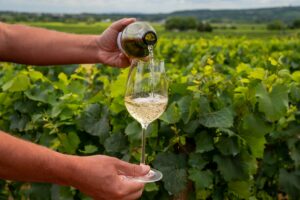
Two bottles from Sonoma and Napa wineries made it on The New York Times' roundup of the 12 most memorable wines of the year. Here's the verdict.
The post Sonoma, Napa Bottles Make The New York Times’ List of Most Memorable Wines of 2024 appeared first on Sonoma Magazine.
]]>





The New York Times recently released a list of the most memorable wines of 2024. Sonoma and Napa wineries made it on the roundup of 12 young, noteworthy wines.
The Times’ chief wine critic Eric Asimov curated the list with a focus on “younger, more accessible bottles along with a couple of middle-aged examples.”
Among the newer bottles is a 2017 Chardonnay from Matt Taylor Wines in Occidental. And one of the older, “middle-aged” wines is a 2001 Cabernet Sauvignon from Corison Winery in St. Helena.
Matt Taylor Wines, Komorebi Vineyard 2017 Chardonnay
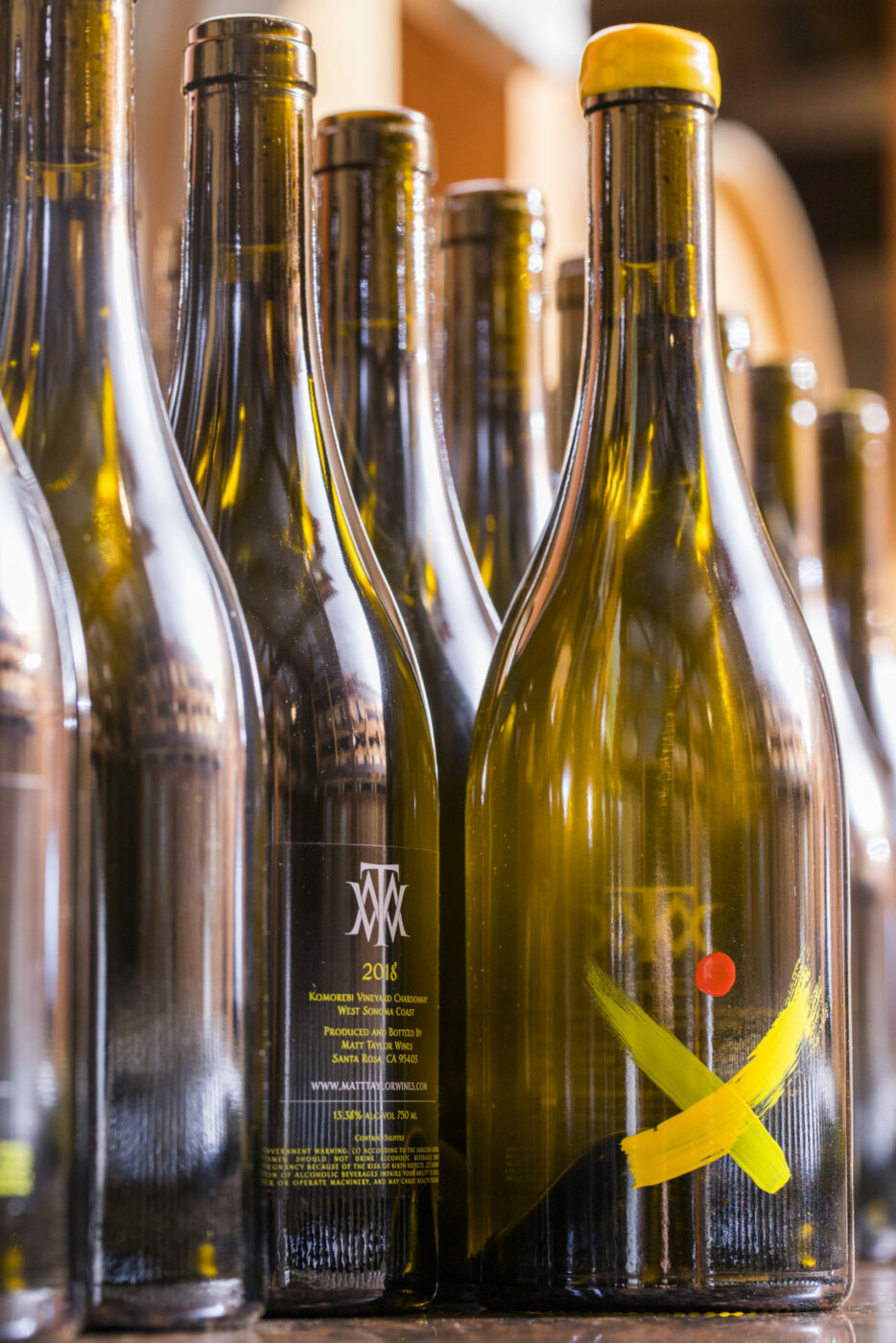
This west county winery focuses on small batches of Chardonnay and Pinot Noir made with organic and biodynamic vineyard practices. Asimov noted he had been “hearing great things” about Matt Taylor’s wines, and was finally able to try it at Point Seven restaurant near New York’s Grand Central Station.
“It was unforgettable, so different in style from the lean, precise Chardonnays that are in fashion around the world today,” Asimov wrote about Matt Taylor Wines’ Komorebi Vineyard 2017 Chardonnay. “This seemed broader, more richly textured, both complex and saline.”
Purchase the Sonoma Coast wine for $75 at Fiasco! Wine & Spirits. The winery also has its Komorebi Vineyard 2018 Chardonnay for sale on its website for $100. Its 2020 Chardonnay is currently sold out, though recent release Pinots are available ($80-$100). matttaylorwines.com
Corison, Napa Valley 2001 Cabernet Sauvignon

Cathy Corison, renowned owner and vintner of St. Helena’s Corison, specializes in Cabernet Sauvignon. The San Francisco Chronicle named her Winemaker of the Year in 2011 as well as “one of Napa Valley’s best winemakers of the last half century” earlier this month.
“With sufficient aging, her wines always have a lot to say,” Asimov wrote of Corison’s Cabernets. “This 2001 was a beautiful expression of the potential of Napa Cabernets, graceful and complex with a lovely balance of earthy, stony, fruit and herbal flavors.”
Purchase a bottle (from $199) at Wine-Searcher. Corison’s 2001 Cabernet Sauvignon (valued at $335) is sold out on its website, but the winery offers dozens of other Cabs (from $65). corison.com
The post Sonoma, Napa Bottles Make The New York Times’ List of Most Memorable Wines of 2024 appeared first on Sonoma Magazine.
]]>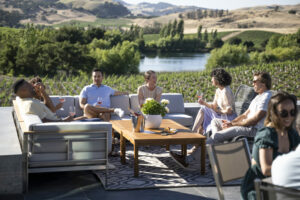
After more than 50 years in business, Cuvaison Winery keeps finding new ways to wow visitors.
The post A Couple of Tech Guys Opened Napa’s Cuvaison 55 Years Ago. It Keeps Getting Better appeared first on Sonoma Magazine.
]]>





Cuvaison has a long history in Los Carneros, predating the appellation itself. But that doesn’t mean the winery is stuck in the past. After more than 50 years in business, the Napa Valley winery keeps finding new ways to wow visitors.
The story
Stop me if you’ve heard this one before: A couple of Silicon Valley tech guys visit Napa Valley and decide to open a winery. That’s just what happened in 1969, when wine-smitten engineers Thomas Parkhill and Thomas Cottrell founded Cuvaison on a hillside property near Calistoga. The two Thomases sold the winery five years later to New York publisher Oakleigh Thorne, who then passed the baton to — are you ready for the twist? — a fourth-generation family of vintners based in Switzerland.
The Schmidheiny family recognized good vineyard land when they saw it. Soon after buying Cuvaison in 1979, they acquired 400 acres in Los Carneros as the focus for their new Chardonnay and Pinot Noir program. In 2009, the family built a modern winery and tasting room at the site.
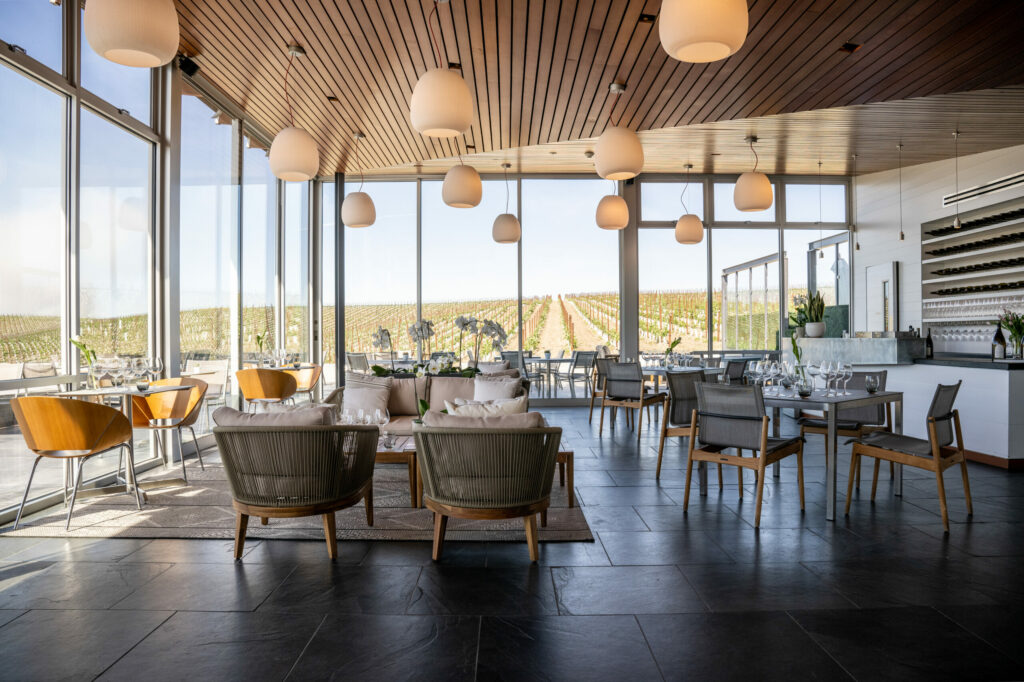
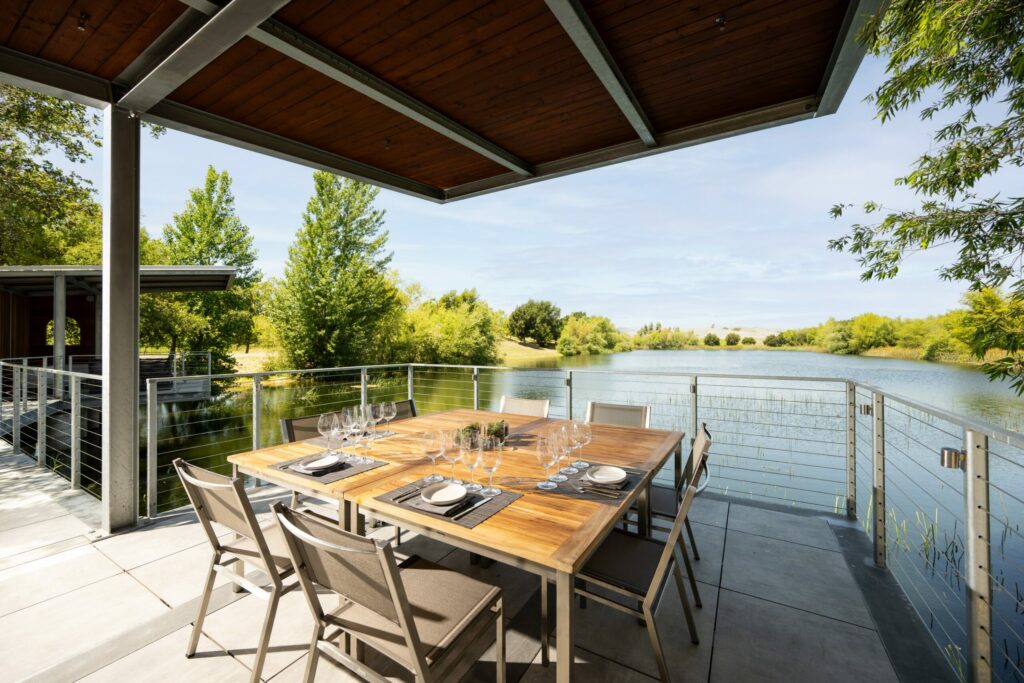
The vibe
Architect Douglas Thornley designed Cuvaison’s light-filled tasting room as an antidote to the dark, cellar-like atmosphere found at many wineries in the early 2000s. Outfitted with wall-size sliding glass doors that blur the lines between indoor and outdoor spaces, the contemporary venue presents panoramic views of the surrounding vineyards and hillsides. Cuvaison recently expanded its terrace tasting area and created two “boathouse” pavilions that extend out over a picturesque irrigation reservoir.
On the palate
Estate Pinot Noir and Chardonnay are the focus here, but it’s also fun to explore Bordeaux-style wines from Cuvaison’s Brandlin Estate on Mount Veeder. I’m sometimes wary of barrel-aged Sauvignon Blanc, but the wines can be truly gorgeous when the oak isn’t allowed to eclipse the fruit. The 2022 Brandlin Sauvignon Blanc ($50) is a prime example. Oak aging adds body to the wine, yet it retains fresh notes of lime, grapefruit and green apple.
If you’re over big, oaky Chardonnays, you’ll dig the 2022 Cuvaison Méthode Béton Chardonnay ($70). It’s made in an egg-shaped concrete fermenter that adds texture to the wine while bringing out its mineral notes. (Translation: yum!) Be sure to try the bright and silky 2022 Cuvaison 90.1 Pinot Noir ($80), made from a single clone planted on the Carneros estate. Standard tastings range from $60 for the Estate Tasting to $85 for the Winemaker’s Tasting, which includes artisan cheese pairings.
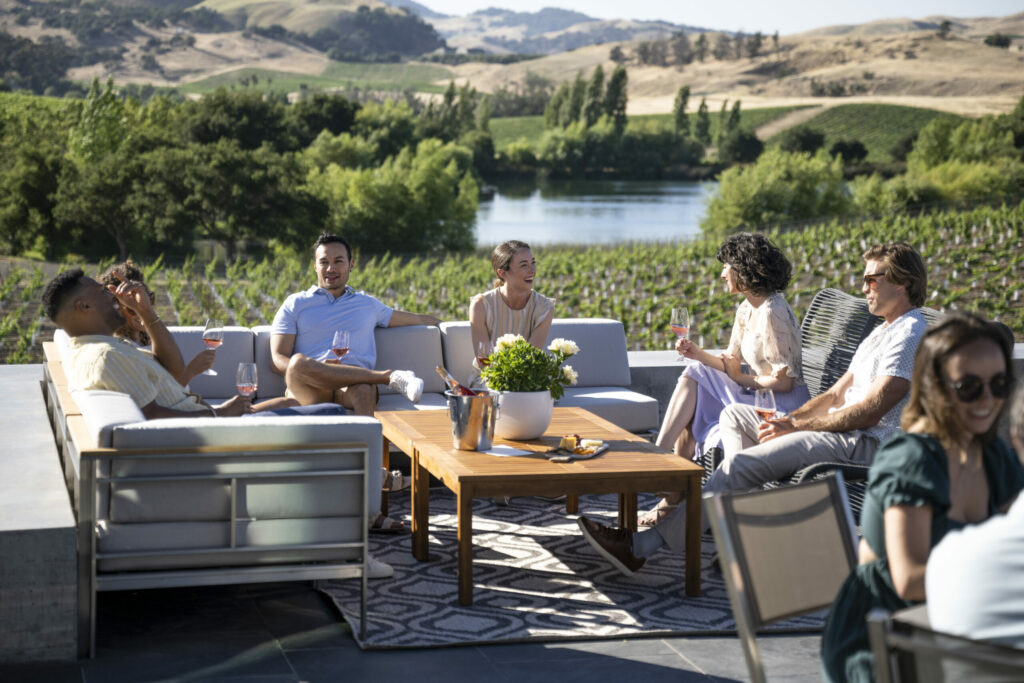
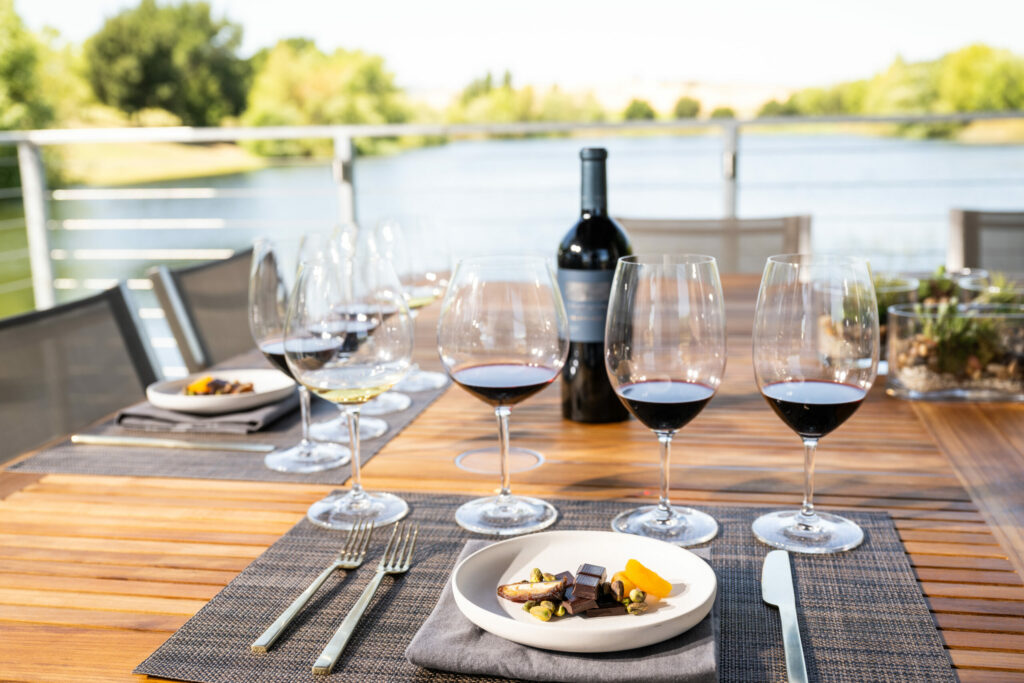
Beyond the bottles
As stunning as the tasting room views are, it’s hard to beat the serenity of the new Boathouse Tasting Experience ($150 per person). The private tasting for two to six guests includes a visit to the winemaking facility and barrel cellar, followed by a golf cart tour of the vineyards with views of San Pablo Bay.
Next, it’s on to the boathouses to sample small- and micro-lot wines expertly paired with gourmet bites like fried olives and duck tostadas. Cantilevered over a scenic irrigation pond teeming with ducks, cranes, herons and even the occasional freshwater otter, the open-sided redwood and steel structures let you imagine you’re relaxing on your own private dock with lively bird chatter as a soundtrack. Cuvaison has just two boathouses, so reservation times fill up quickly. This experience runs year round, weather permitting.
Cuvaison, 1221 Duhig Road, Napa. Open daily by appointment. cuvaison.com
Tina Caputo is a wine, food, and travel writer whose work has appeared in numerous publications, including SevenFifty Daily, Visit California, HuffPost, and Sonoma magazine. Follow Tina on Twitter @winebroad, view her website at tinacaputo.com, and email her story ideas at tina@caputocontent.com.
The post A Couple of Tech Guys Opened Napa’s Cuvaison 55 Years Ago. It Keeps Getting Better appeared first on Sonoma Magazine.
]]>
Local restaurants and wineries are serving up a taste of Scandinavia this holiday season.
The post Swedish Mulled Wine ‘Glögg’ Is the New Hot Drink in Sonoma and Napa appeared first on Sonoma Magazine.
]]>





Nothing tugs at a Swede’s gastronomic heart strings like glögg at a winter gathering. Just the thought of this Nordic version of mulled wine — scents of cinnamon, cardamom and cloves wafting through the house — can bring a tear to an expatriate’s eye. Next to the joys of a midsummer celebration, the winter glögg party may very well be one of the most nostalgia-inducing of Swedish traditions.
In Sweden, glögg parties kick off the holiday season in workplaces and homes. Abroad, the craving for glögg is the cause of IKEA pilgrimages. For Swedes, Christmastime hasn’t quite arrived until you’ve become suitably tipsy on mulled wine, paired with “lussebullar” (saffron buns) and “pepparkakor” (ginger cookies).
Now, Wine Country Swedes — immigrants like myself and those 25,128 Sonoma County residents claiming Scandinavian ancestry — can find their favorite warm winter drink at home instead of heading to the yellow and blue big box store in Emeryville or Palo Alto.
But you don’t have to be Swedish to enjoy a glass of glögg! Here are three local places that serve glögg paired with Swedish food and sweet treats this winter.
God jul (happy holidays) and skål (cheers)!
Pair glögg with Swedish food at Stockhome, Petaluma
The only Swedish restaurant in Wine Country will do its patriotic duty by putting on a traditional “julbord” — a family-friendly meal featuring holiday specialties — three consecutive Sundays in December (Dec. 4, 11 and 18, with seatings available at noon and 5 p.m. To-go julbord available Dec. 23. Tickets available online).
Swedish chef and restaurant owner Roberth Sundell will serve house-made glögg with candied almonds and raisins, a variety of pickled herring (mustard, grandma’s classic, saffron and leek), dill-cured salmon (“gravlax”), hot mustard-baked Christmas ham (“julskinka”), ginger-glazed spareribs, Swedish meatballs and more. For dessert, guests will enjoy Santa’s rice pudding and homemade treats. All menu items are made from scratch by chef Sundell, including a pig’s head terrine (“sylta”) and pâté of elk (lantpâté).
Sundell’s glögg — made from a recipe he’s been perfecting for nearly 20 years — will also be served at Stockhome throughout December.
“The secret to making good glögg is to keep tasting and adjusting the ingredients to make sure it’s not too sweet, but sweet enough to taste all the spices,” advises Sundell.
The Swedish chef likes to add vodka, cognac or brandy to his glögg for “an extra kick.” He includes plenty of cardamom, ginger, star anise, allspice and orange peel “to bring out the flavor,” and adds dried fruit (plums, apricots, raisins, dried apples) for sweetness. He emphasizes the importance of heating the glögg slowly and making sure it never boils, as this causes the alcohol to evaporate.
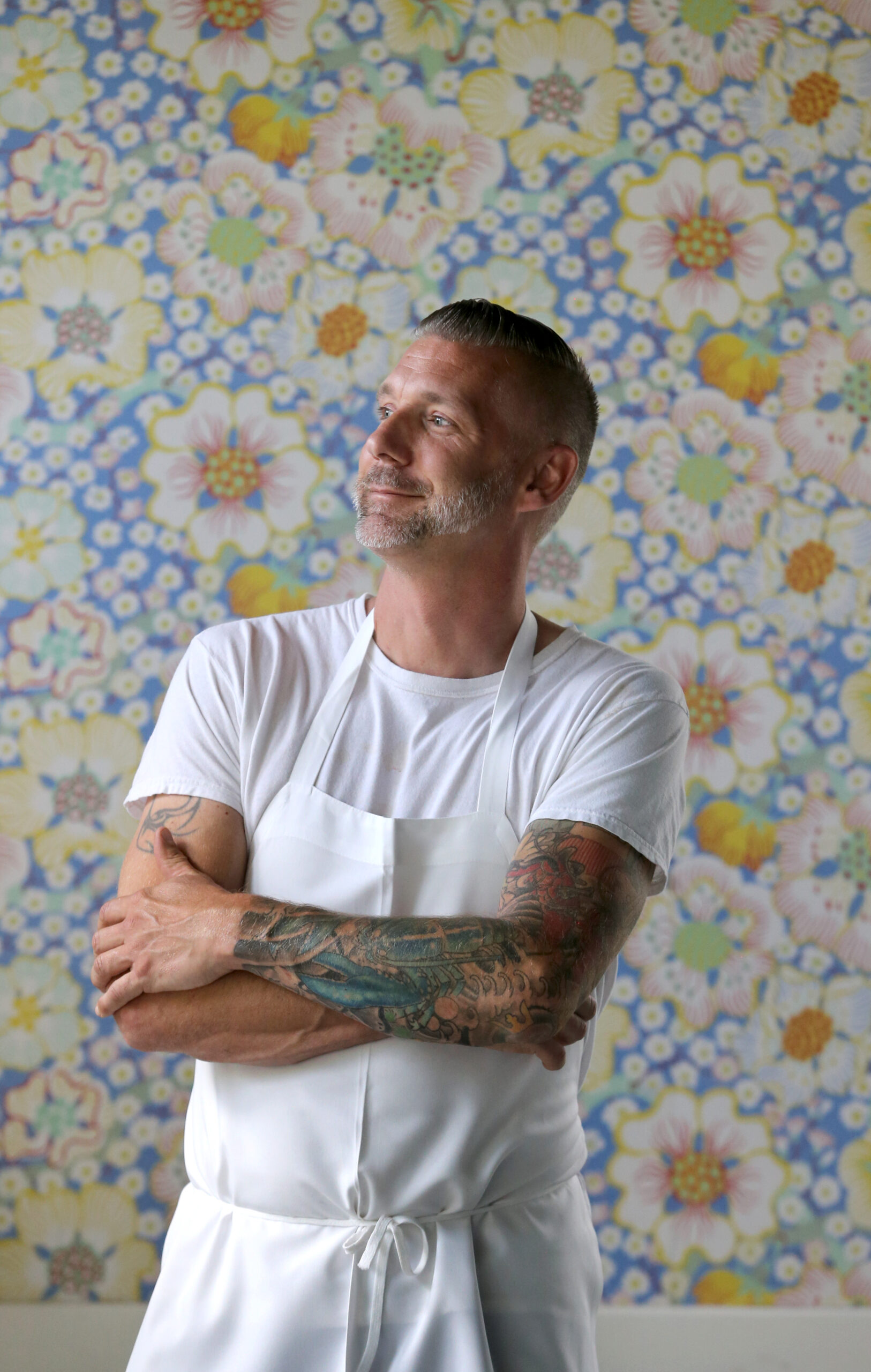
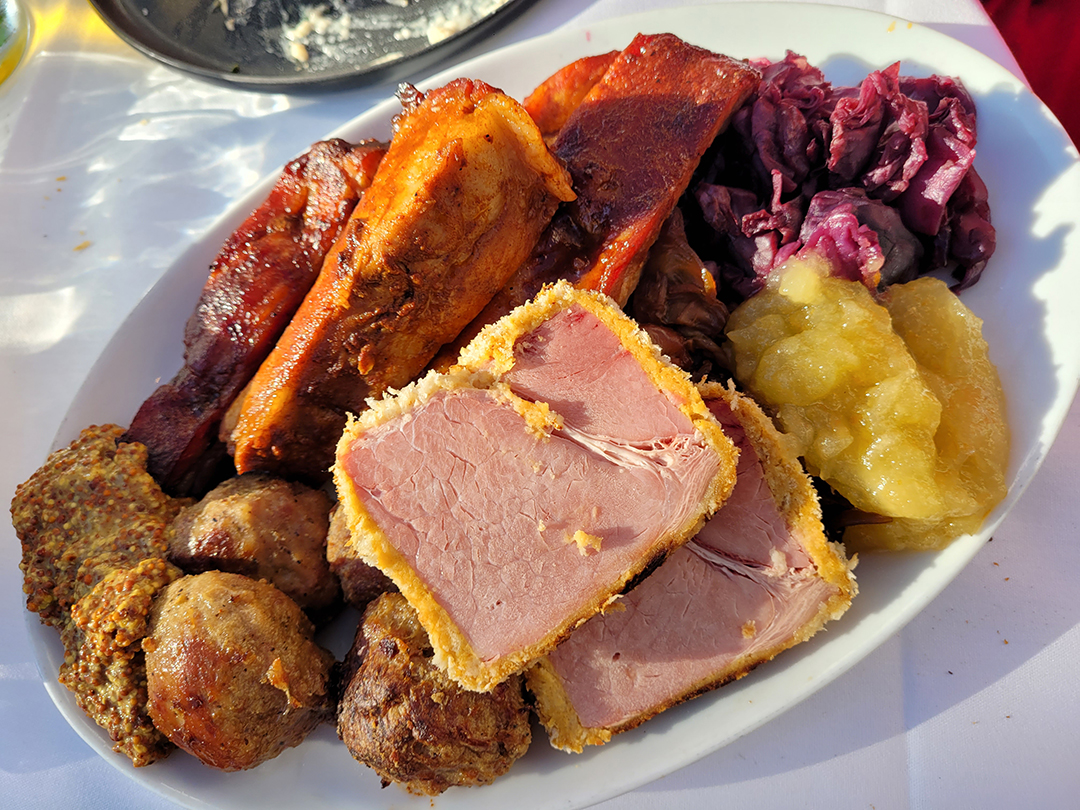
During the holiday season, Sundell has particularly fond memories of working at restaurants in Sweden, where glögg would be served to guests outside as they waited in the cold winter night before going inside to the warmth of the julbord.
The Swedish chef, like many of his countrymen, takes pride in keeping up culinary traditions. While he likes to incorporate foreign and modern influences into his cooking, his Stockhome julbord is a classic holiday meal, the kind you would find in a Swedish home on Christmas Eve (Swedes celebrate Christmas on Dec. 24).
Stockhome’s julbord ($90 per person; $50 for kids 5-12, free for kids 4 and under) has two seating times available — noon and 5 p.m. — on Sunday Dec. 4, 11 and 18. Reservations need to be made in advance by purchasing tickets online at stockhomerestaurant.com. Julbord is also available to-go on Dec. 23. 220 Western Ave., Petaluma, 707-981-8511.
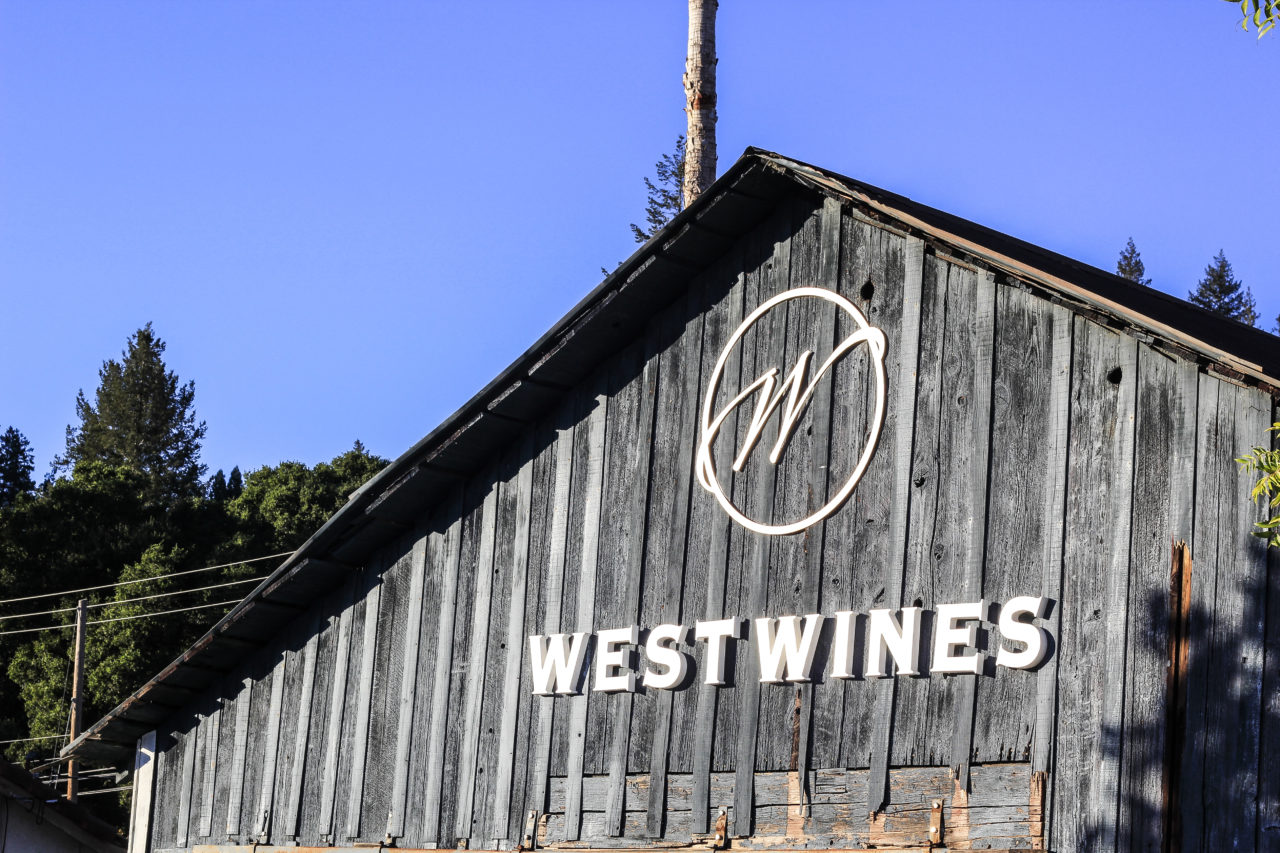
Sample glögg at West Wines, Healdsburg
Katarina Bonde and Bengt Åkerlind moved from Sweden to Seattle in 1992 and then made their way south to Healdsburg, where they started making wine. Their French-style wines can be found in the U.S. as well as in restaurants in their native country; their 2005 Cabernet Sauvignon Reserve was served at the 2010 Nobel Prize banquet in Stockholm.
Unable to buy glögg in the United States, Bonde has been making her own since the early ’90s. After opening the West Wines tasting room in 2011, she has been serving the drink to guests during an annual glögg party that takes place on the first weekend following Thanksgiving (this year, Nov. 25-27).
Bonde makes her glögg a couple of weeks before the party so that the flavors can blend together. In addition to the traditional ingredients — wine, brandy or cognac, cinnamon sticks, cloves and cardamom — she uses dried orange rinds and brown sugar, instead of the refined white version, as this lends extra flavor. She always saves a couple of bottles for the following year — according to Bonde, the year-old concoction tastes better than any other glögg.
“It’s my reserve,” Bonde laughs. But it’s clear that, like all Swedes, she takes glögg-making and drinking seriously. “Do not let your glögg boil,” she warns repeatedly when recounting her glögg recipe. (By now you have come to understand that boiling glögg is a Swedish cardinal sin.)
The annual glögg gathering at West Wines is one of the winery’s most popular events. Quarter Swedes, eighth Swedes; anyone who can claim even the tiniest bit of Swedish ancestry seems to show up for the party, says Bonde. And each year, there are increasing numbers of non-Nordic glögg converts. As is the Swedish custom, Bonde’s glögg is served with raisins and blanched almonds and is paired with ginger cookies, cardamom rusks (similar to biscotti) and other Swedish sweet treats.
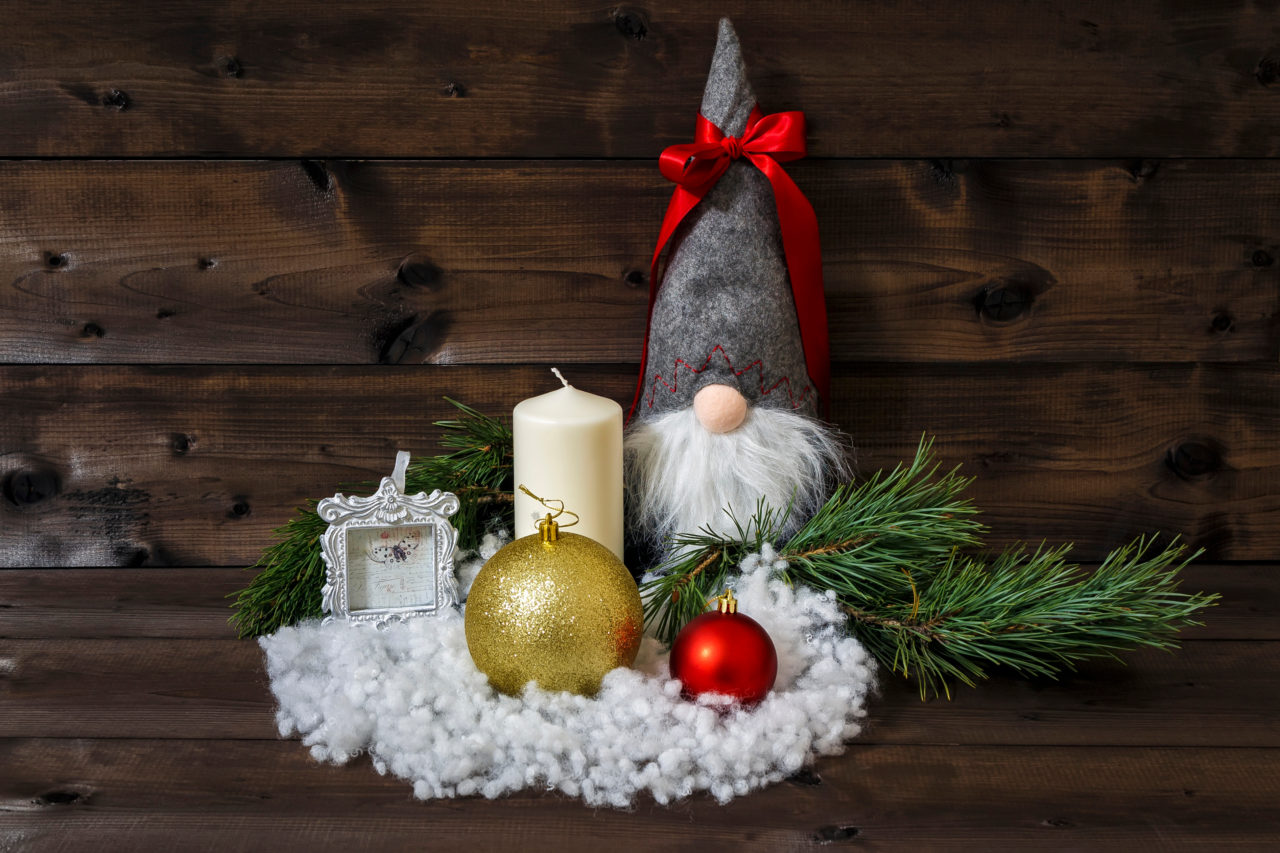
The Healdsburg tasting room is decked with handmade ornaments, which Bonde buys in Sweden. Each year, she brings a suitcase filled with straw yule goats, advent star lights and “tomtenissar” (gnomes) on a flight from Stockholm to San Francisco.
The Swedish gnome decorations are sold to guests throughout the holiday season, in addition to being on display in the tasting room. A word of advice, though: Treat your tomtenissar (gnomes) well. According to Swedish folklore, they act as guardians of the home. If treated well, they will protect your family from evil and misfortune. But the gnomes can also be short-tempered and mischievous. They are known to play tricks — even steal — if mistreated or offended.
The West Wines annual glögg party is Nov. 25-27 from 11 a.m. to 4 p.m. Reservations are recommended with walk-ins based on availability (last seating is at 4 p.m). $30 tasting fee includes glögg and cookies. West Wines, 1000 Dry Creek Road, Healdsburg, 707-433-2066, westwines.com.
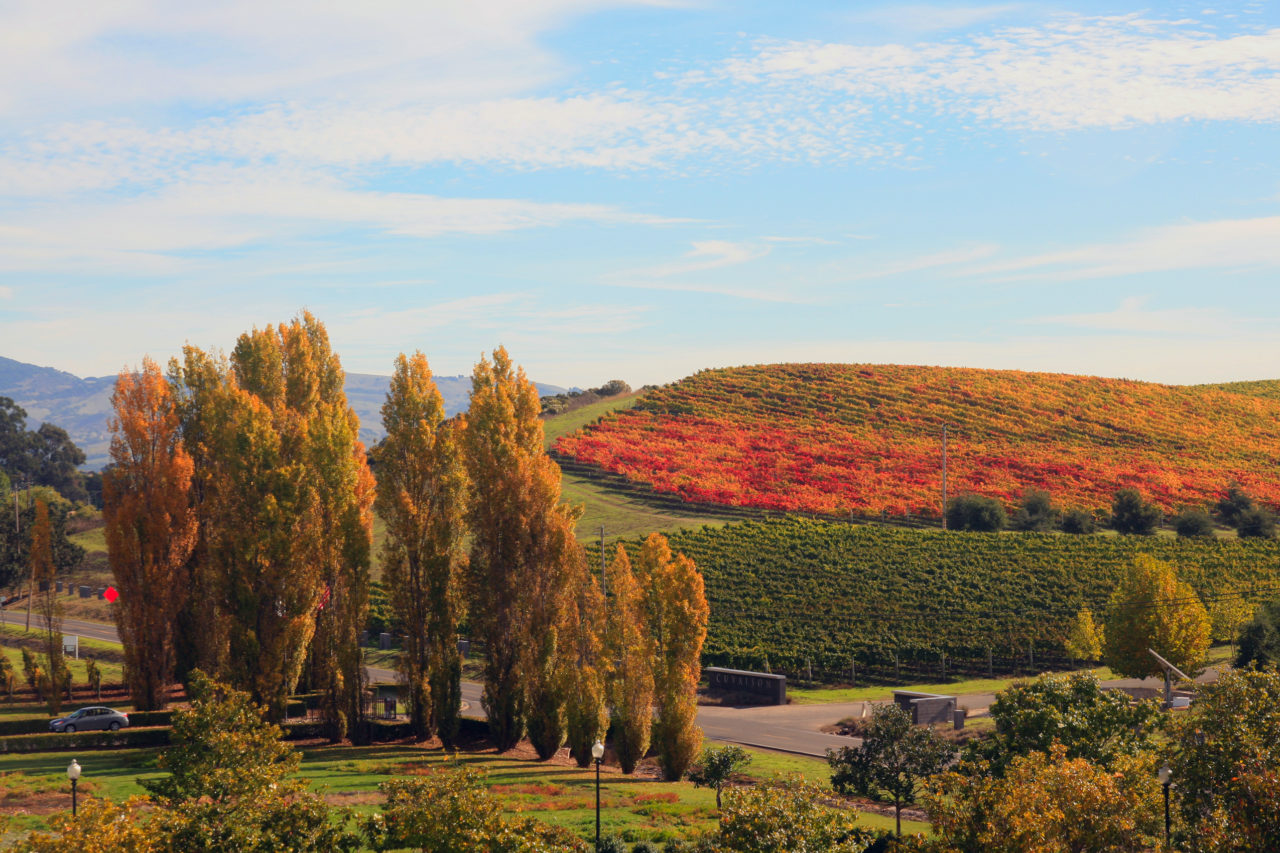
Order glögg from Sjoeblom Winery, Napa
Swedish native, winemaker and “glögg master” Mike Sjöblom makes his own version of the mulled winter drink using vintage syrah wine and spices imported from Sweden. In contrast to most Swedes, who tend to use less expensive red wine for their glögg, Sjöblom stresses the advantage of being a little bit more discerning.
“To make good quality glögg, it is imperative to start with a good quality wine,” says Sjöblom, who is one of only a handful of winemakers who use their own wine to make glögg.
The Napa vintner prefers to work with natural flavors: Full-flavored wine (“to bring forward the fruit”) and organic ingredients (“to create the characteristic glögg flavor”) are carefully blended. The use of this process eliminates the need for too much sugar, according to Sjöblom.
In Sweden, there are non-alcoholic versions of glögg. While Sjöblom is “not opposed” to these alternatives, bundling them together with traditional glögg is simply “going too far” in his opinion. Like Roberth Sundell of Stockhome and Katarina Bonde of West Wines, he likes to remind aspiring glögg makers to heat their drink carefully: “Remember, alcohol starts to evaporate at 78 degrees celsius (172 F).”
Those interested in sampling Sjöblom’s glögg every year can sign up to become member of his winery’s glögg club. Club members receive a 20% discount and are guaranteed a shipment of glögg. Non-club members can buy Sjöblom’s glögg for $25 a bottle on the winery’s website.
Purchase Sjöblom glögg at gloggclub.com. 707-363-6035.
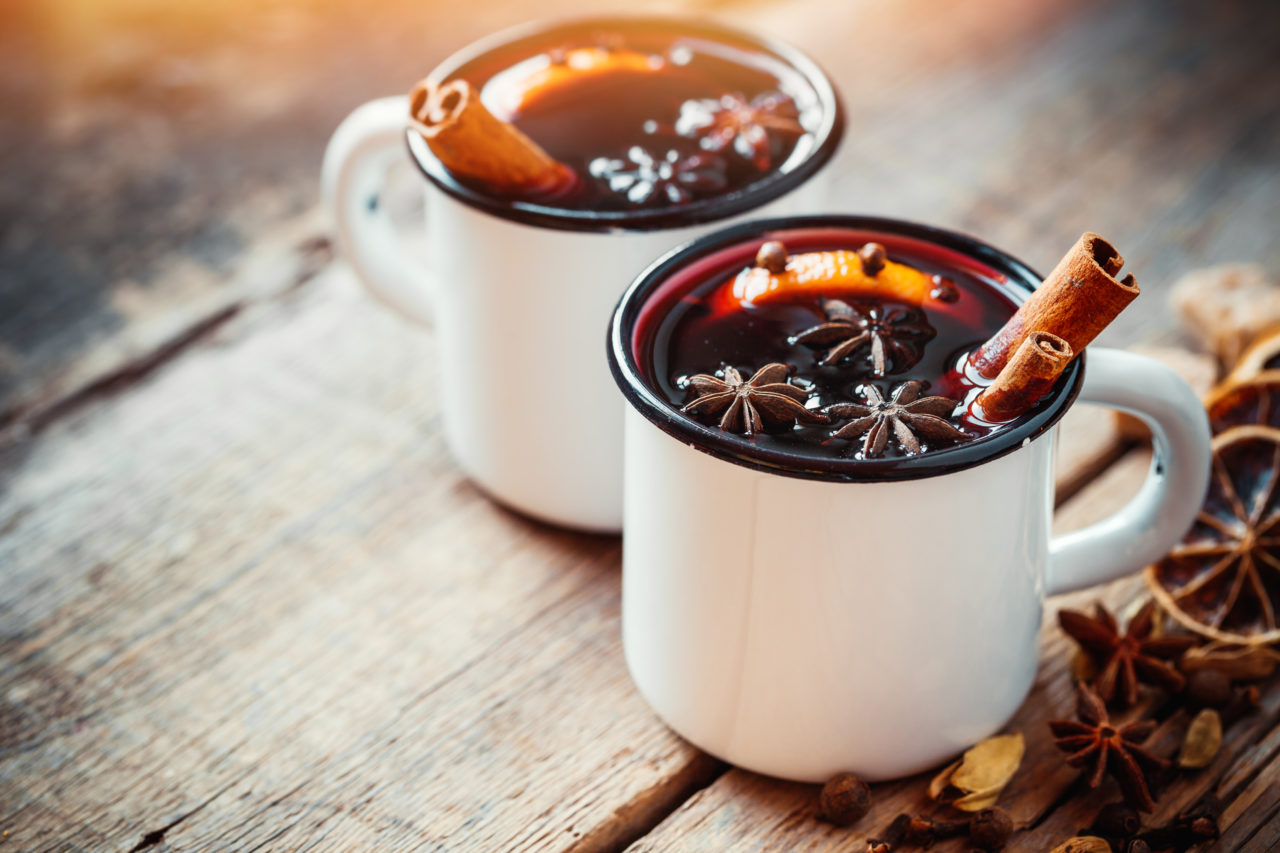
Throw your own glögg party
The following recipe is from Katarina Bonde of West Wines, who recommends using a drinkable but affordable red wine. Pair your glögg with Swedish saffron buns and ginger cookies.
West Wines Glögg
Makes 20-25 servings
2 bottles of full-bodied red wine (for example, a fairly fruity zinfandel or syrah)
1-2 cups of brandy or cognac
½ teaspoon cardamom seeds
5 cinnamon sticks (soak the cinnamon sticks in water beforehand to release the flavor)
20 cloves
2 strips of dried orange rind
1 knob fresh ginger
½ cup raisins
1 cup of sugar (brown sugar works best)
For garnish:
1 package regular raisins
1 package blanched, slivered almonds
Mix all ingredients and let simmer in a pot. Do not let it boil since the alcohol will evaporate and alcohol enhances the flavors from the spices. Let wine and spices cool off and pour into empty bottles or some other vessel that you can close. Let rest overnight and reheat when you want to use it (remember not to boil it). The glögg can be saved and used throughout the holiday season.
Serve in small cups and garnish with some raisins and almond slivers per cup. Make sure you also have teaspoons so the guests can get the soaked raisins out when they have finished the cup. They are great!
The post Swedish Mulled Wine ‘Glögg’ Is the New Hot Drink in Sonoma and Napa appeared first on Sonoma Magazine.
]]>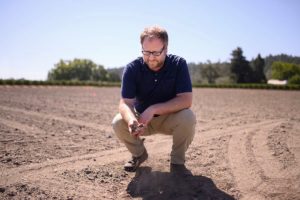
Cab is king in Napa Valley. But as secure as its reign may seem, some think we shouldn't take it for granted.
The post Could Climate Change Mean an End to Cabernet in Napa Valley? This Winemaker Thinks So appeared first on Sonoma Magazine.
]]>





Cabernet Sauvignon is king in Napa Valley. 51 percent of the area’s 46,000 acres of wine grapes are devoted to the varietal. Chardonnay grapes, which come in on number two, occupy just over 6000 acres, and while more than 30 other wine grape varieties are grown here, none of them come with the kind of bragging rights that the coveted “cab” does.
But as secure as the reign of Cabernet Sauvignon may seem, some think we shouldn’t take it for granted.
“I think you’d be foolish to believe Napa Valley is going to look exactly like this 30 years from now. I don’t think Sonoma is going to look like Sonoma 30 years from now,” says Dan Petroski, winemaker at Larkmead Vineyards in Calistoga.
Petroski, along with other Napa Valley winemakers, thinks climate change — rising temperatures, droughts, extreme weather — might dramatically alter the local winegrowing landscape. To prepare for such a scenario, he is now looking at grapes from warmer regions around the world and thinking about how they might be implemented in Napa Valley 20 to 30 years from now.
To get a better idea, he’s about to start experimenting with some of these warmer-climate grapes in Larkmead’s vineyards. The Calistoga winery is currently dedicating three acres out of their 110-acre estate to a “viticultural research block.” The experimental vineyard will initially be planted with seven red grape varieties and one white.
“My number one objective for these seven red grape varieties is that they have the ability to blend well with Cabernet, as a supporting actor until Cabernet can’t be used anymore,” says Petroski. “We’re trying to get a head start on this whole process. I don’t want 2040 to roll around and we’re sitting on our heels going ‘alright, what are we going to plant now, when it’s too hot for Cabernet?’”
The three-acre plot will be planted in the late spring or early summer of 2020 with Chenin Blanc, Petite Sirah and Zinfandel, alongside varieties such as Aglianico, Tempranillo, Touriga Nacional, Charbono and Syrah.
But planting, growing, harvesting, aging, bottling, and finally seeing what customers think of the wines will take time.
Expected to last 21 years, the project will be divided into three phases — the upcoming planting is part of the first phase. Every seven years, Petroski hopes to find one or two grape varieties that will do well at the winery.
Founded in 1895, Larkmead will celebrate its 125th anniversary in 2020. This isn’t the first time the winery has been involved in viticultural research. In the 1940s, a Cabernet Sauvignon clone commonly known as the “Oakville selection” was developed here by UC Davis viticulturist Dr. Harold Olmo.
A newly installed walkway leads the way to the winery’s research block. It’s a path Petroski hopes will encourage conversations with visitors about the future.
“It’s hard to tell people Cabernet is going to die. It’s hard to say it’s over because it’s still our lifeblood. It’s the beating heart of what we do and we do it really well,” says Petroski. “Some of the best wines in the world are made here in the Napa Valley, so it’s hard to have that conversation. But I think the other side of that conversation is that we’re forward-thinking. We are evaluating, we’re looking to the future.”
The post Could Climate Change Mean an End to Cabernet in Napa Valley? This Winemaker Thinks So appeared first on Sonoma Magazine.
]]>